The following are some of the many photos we took when we visited the local indigenous communities of Bawaka and Banialya.
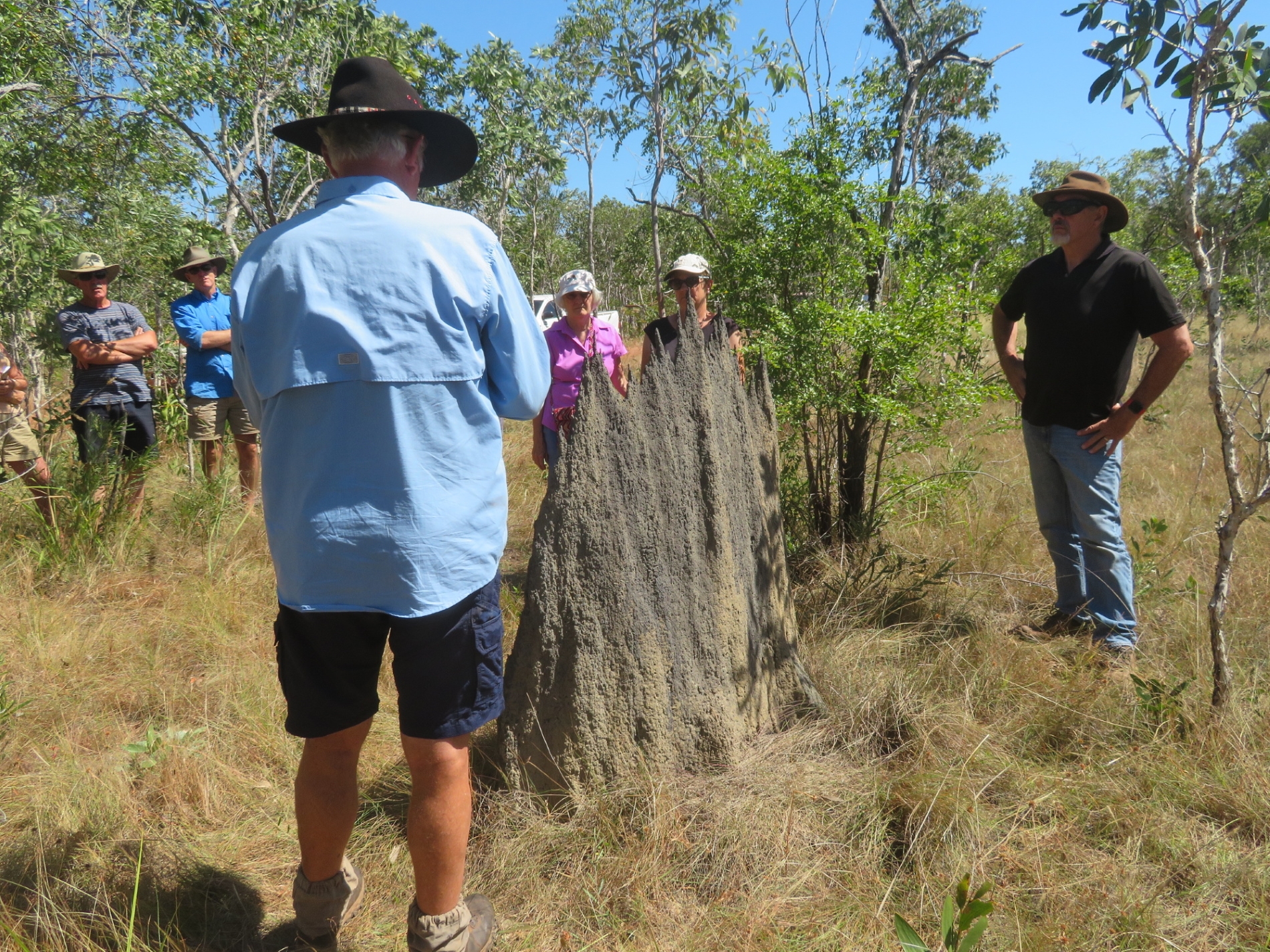
Neill teaching us about the magnetic anthills.
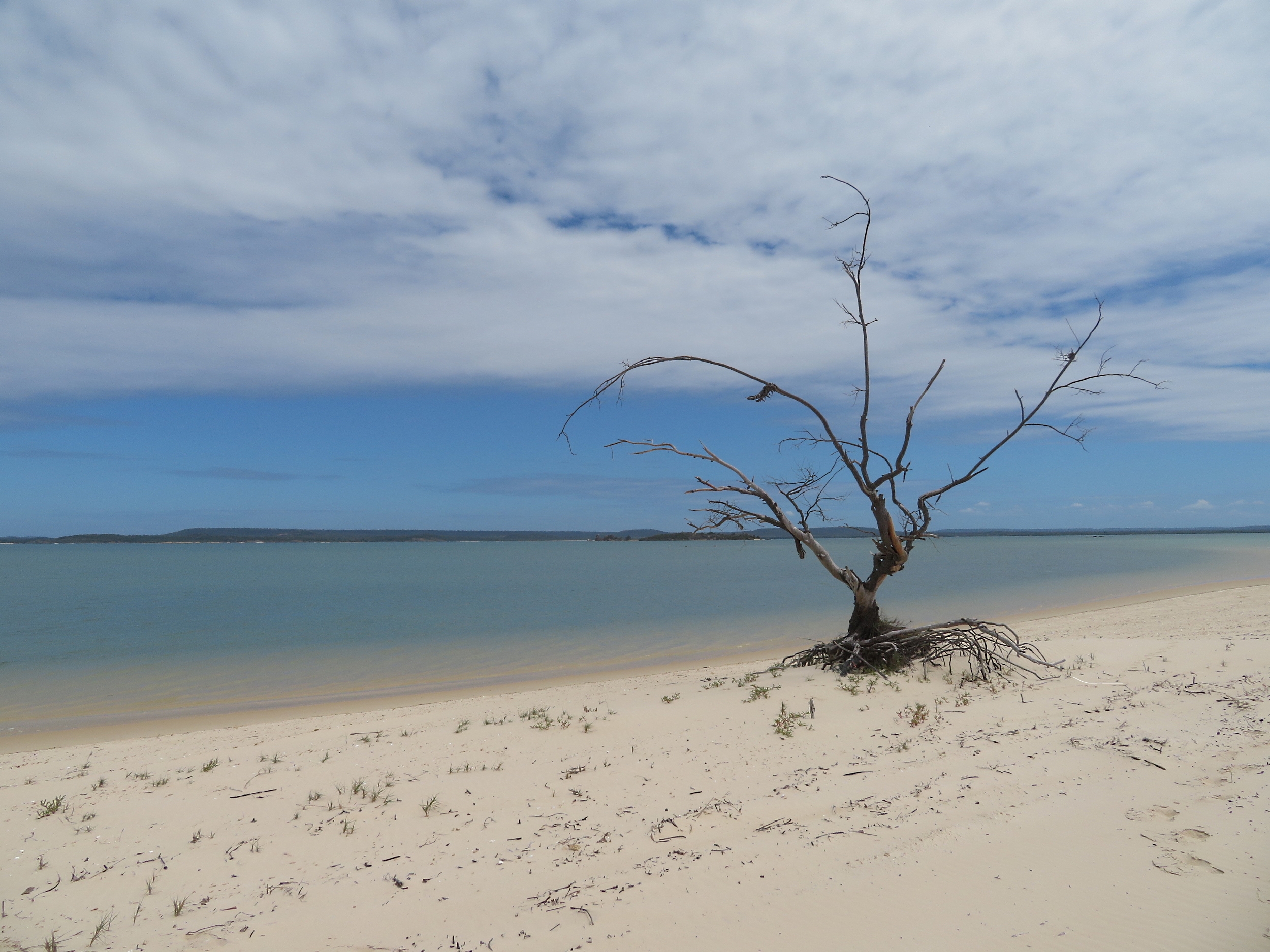
The beautiful bay on which Bawaka is sited.

Fishing, with a local flavour.
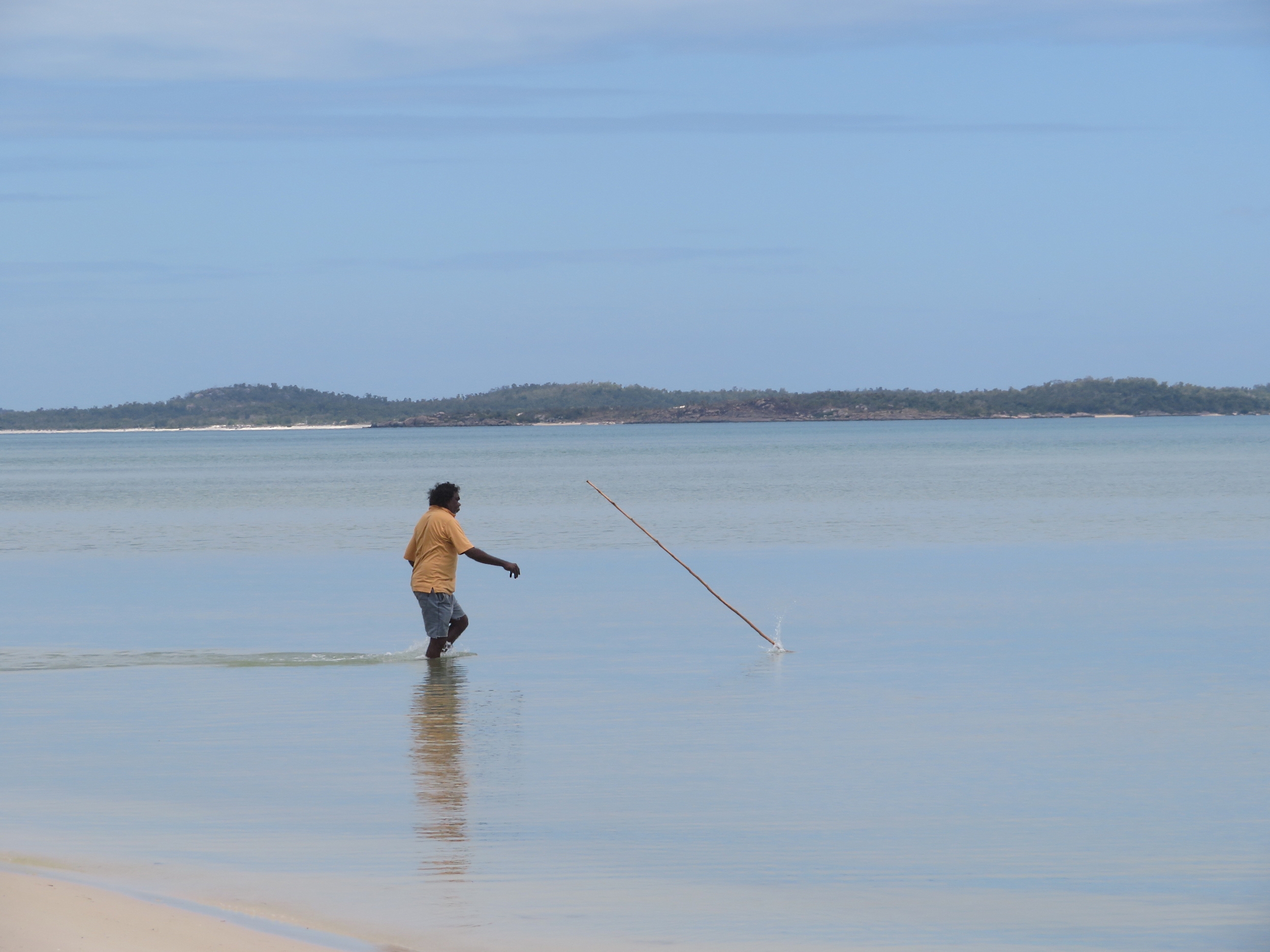
Spearing a mudcrab for our dinner.

Got it! Caught that crab!
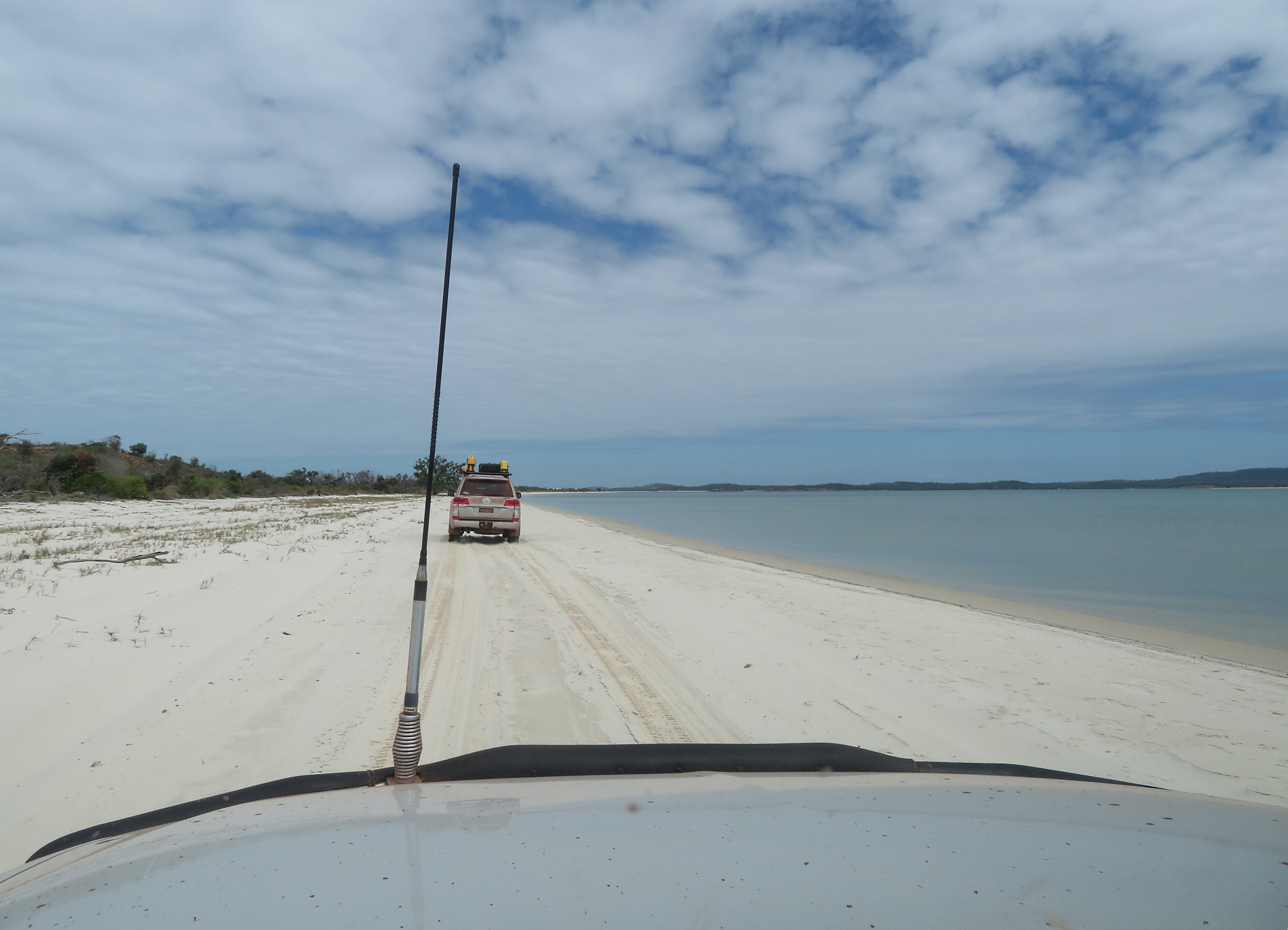
Leaving the very soft sand inland track and now following the beach around to Timmy’s place, Bawaka.
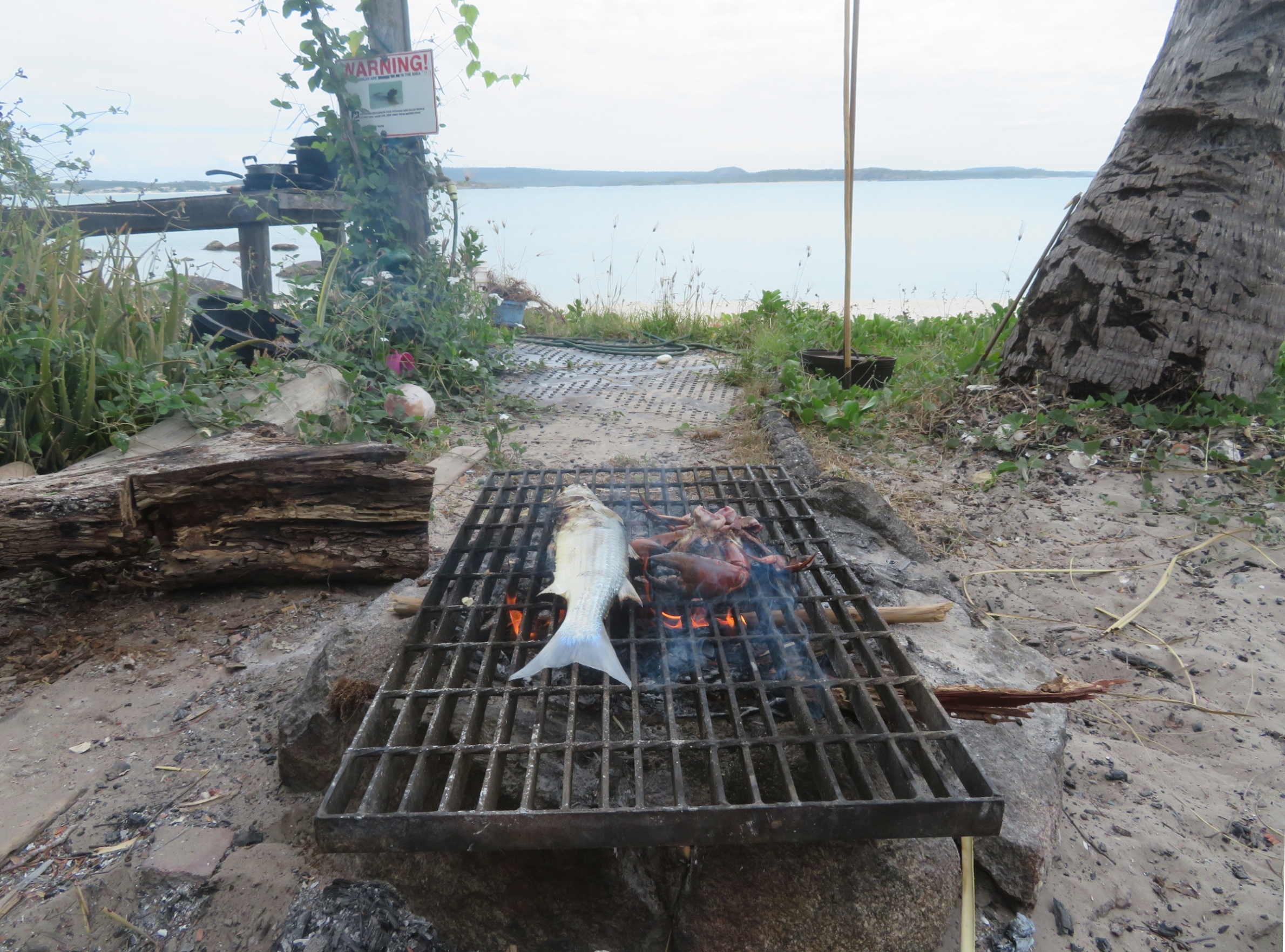
BBQing a fish and mudcrab just caught by the young guys with their spears.
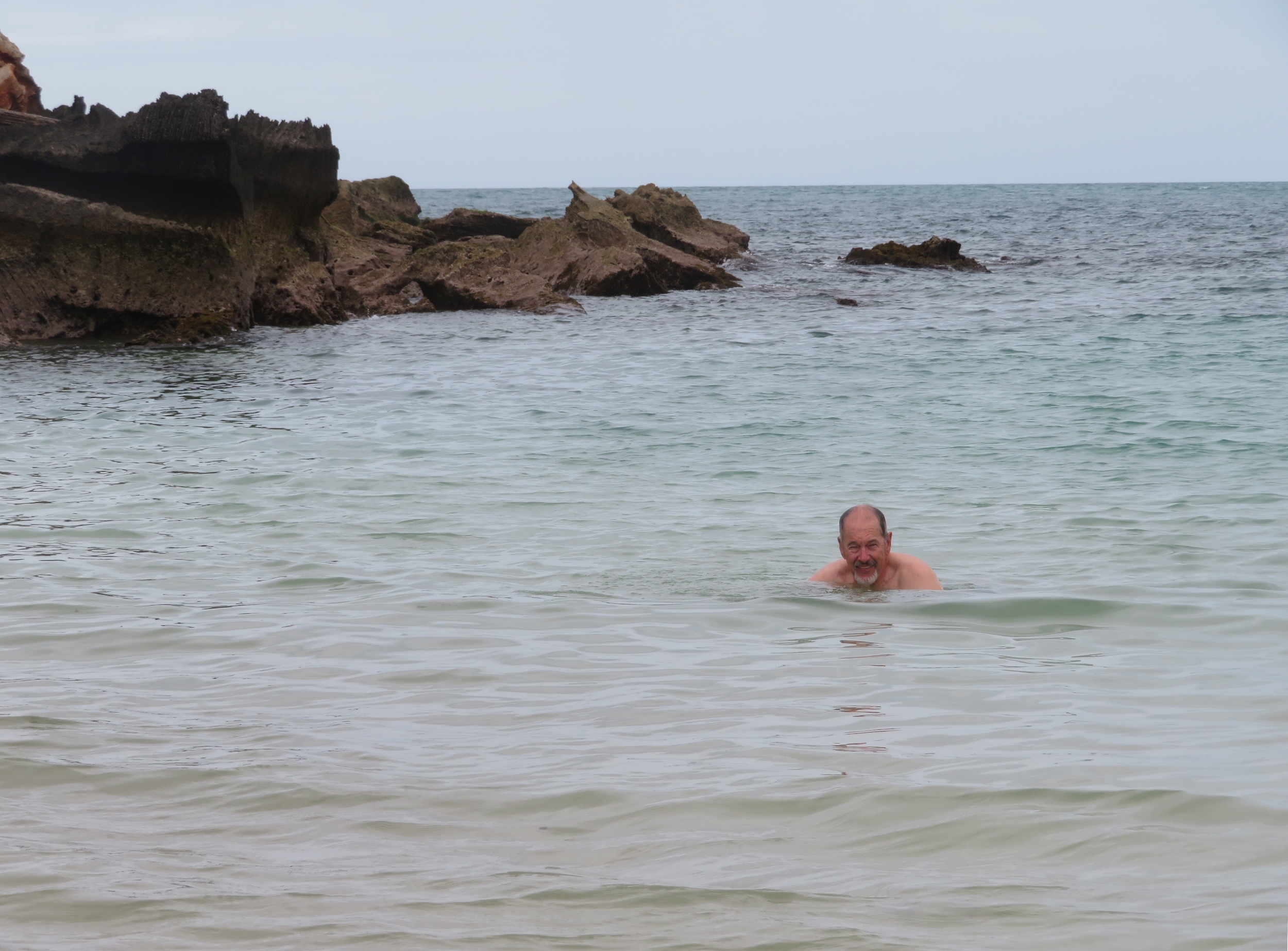
Steve cooling off in the ocean at Lonely Beach.
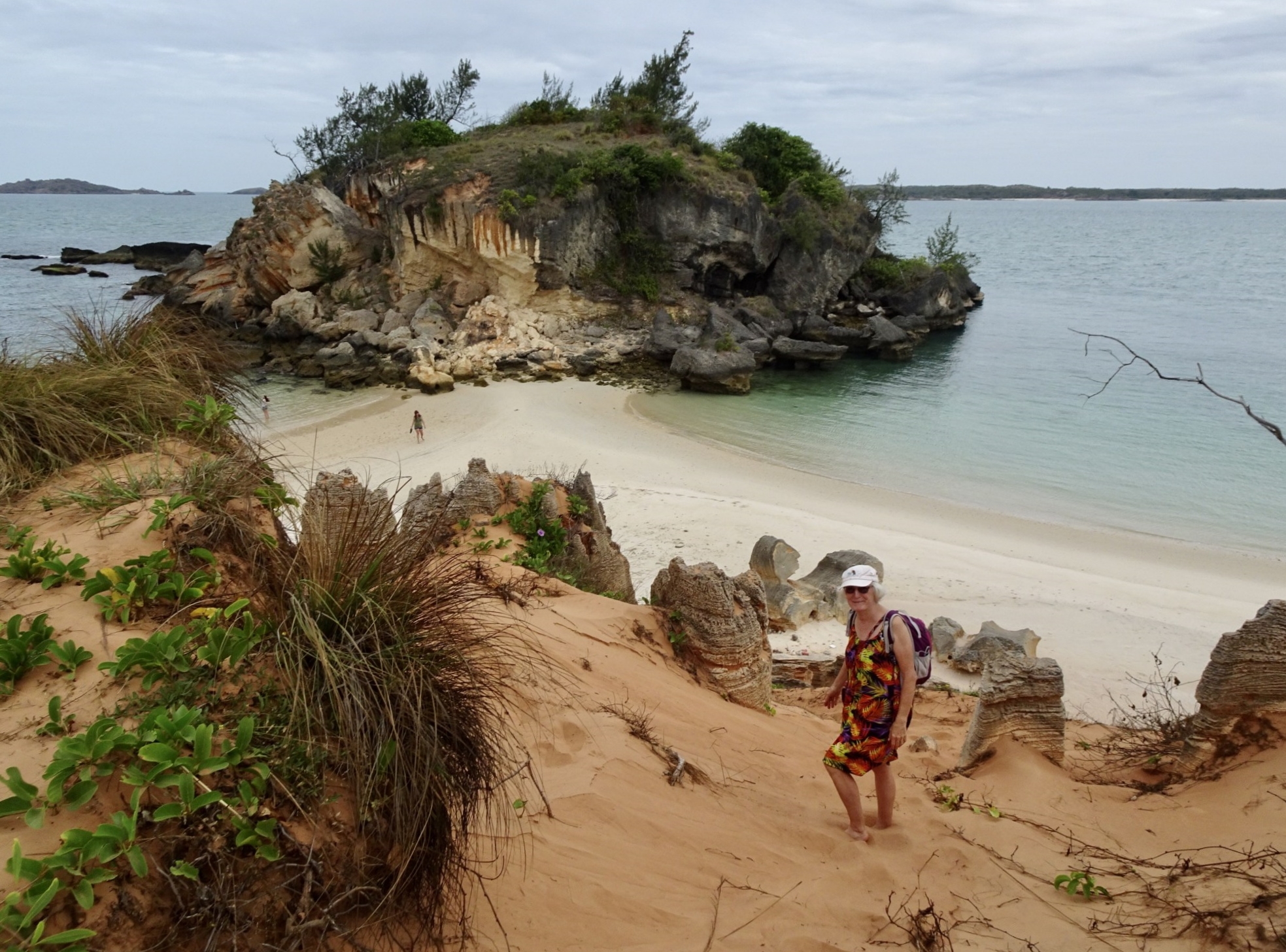
Pat, heading down the cliff to the shore at Lonely Beach. We’ll swim in the cove to the left, but left a lookout up here to keep an eye out for dark shadows moving through the water.
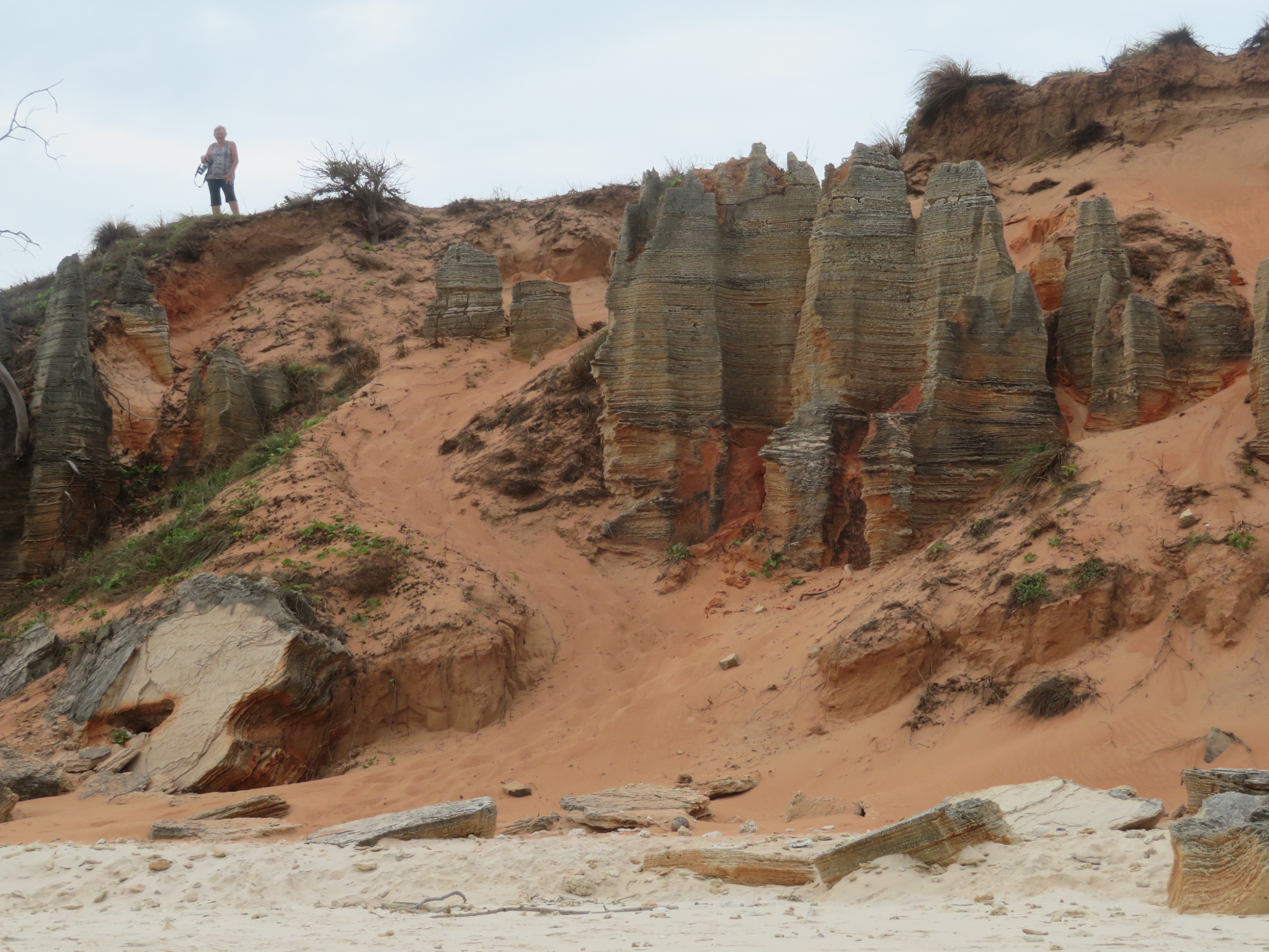
Our crocodile lookout on the cliffs above Lonely Beach while we swam. The locals say this is a safe beach to swim – I don’t know why the crocs wouldn’t come here though. Note the white sand of the shore at the edge of the red cliff sand.
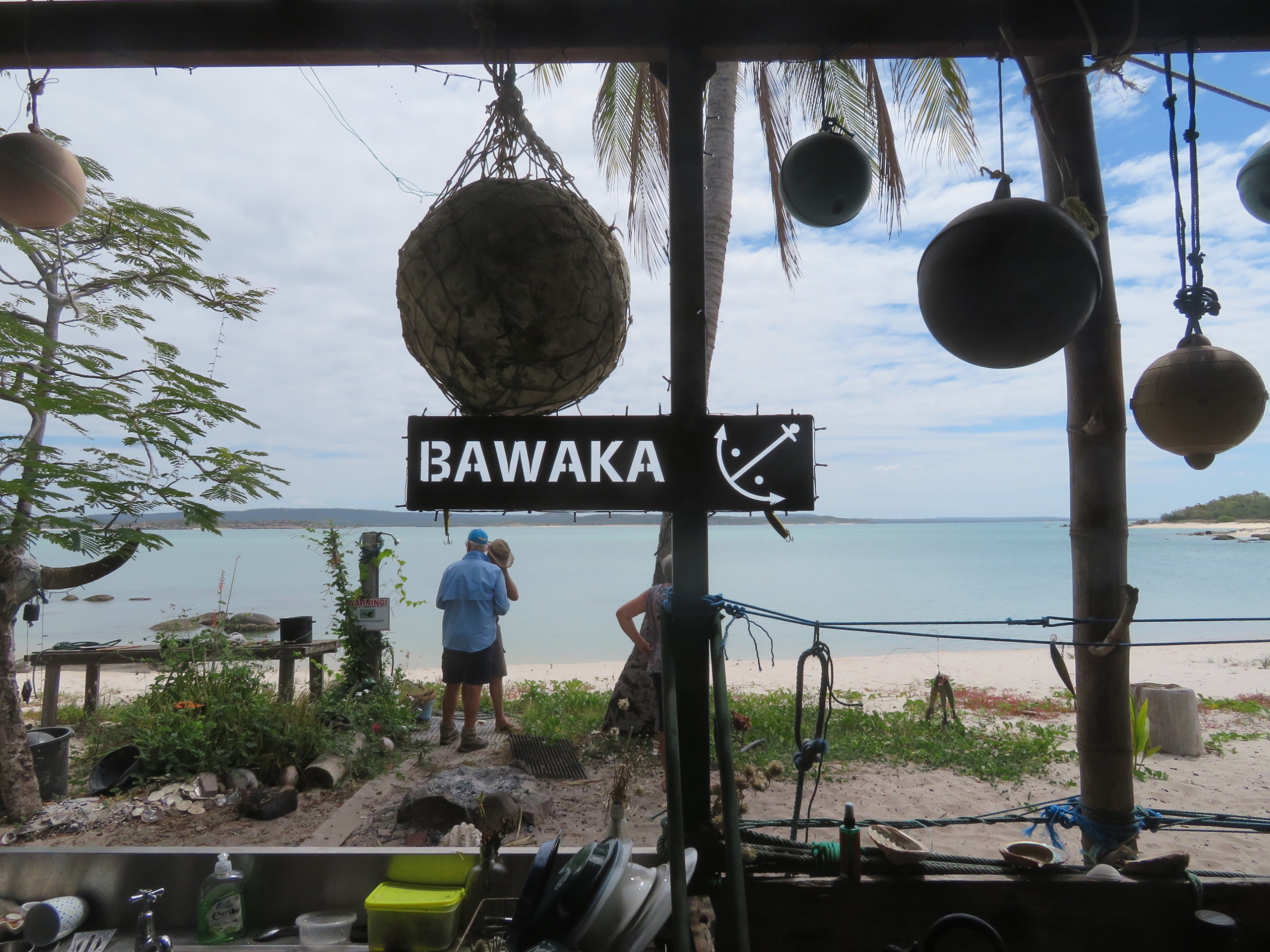
Bawaka
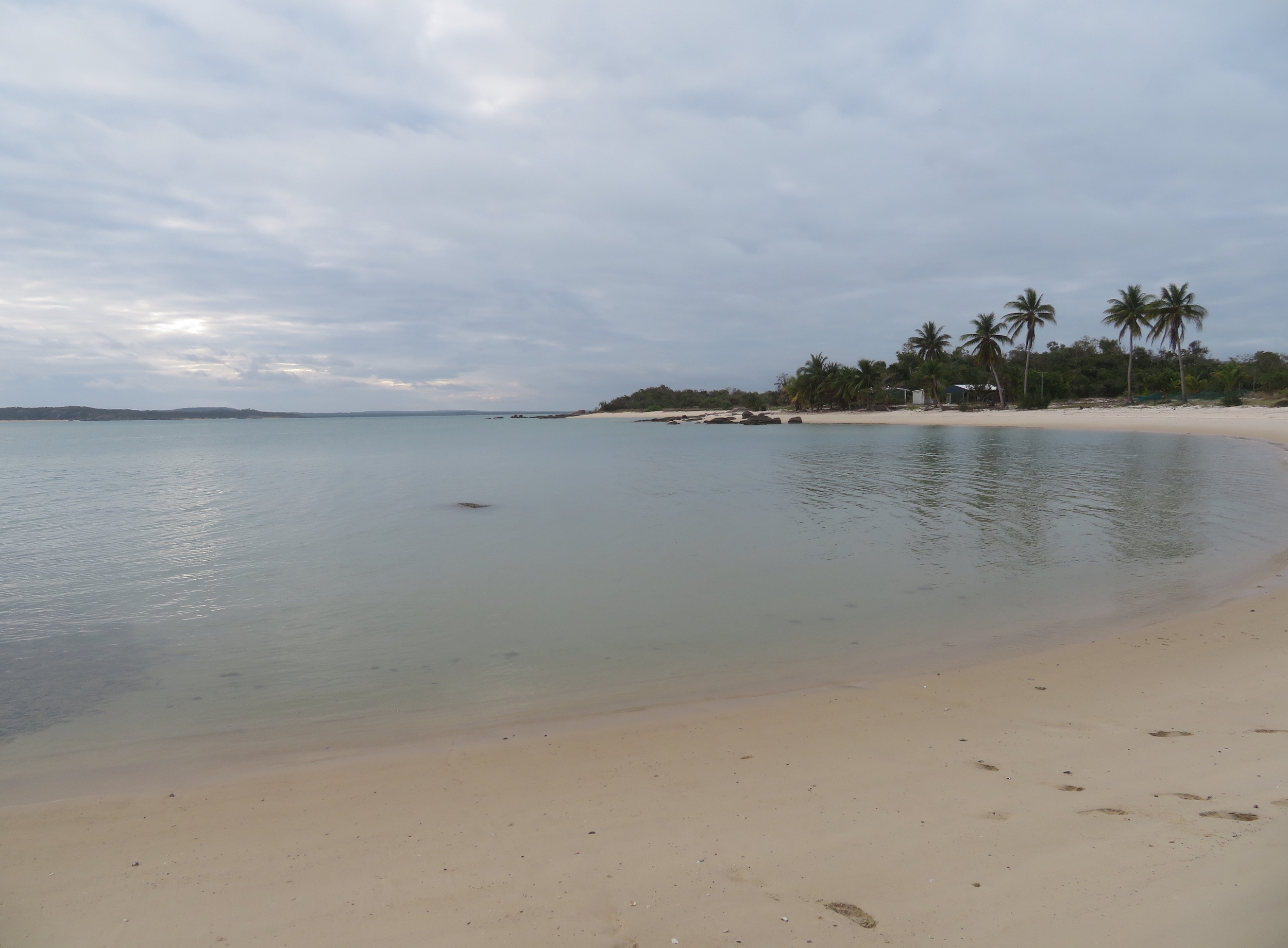
Our beach at Timmy’s, Bawaka for the next few days. A larger family settlement can be seen around the other side of the bay.
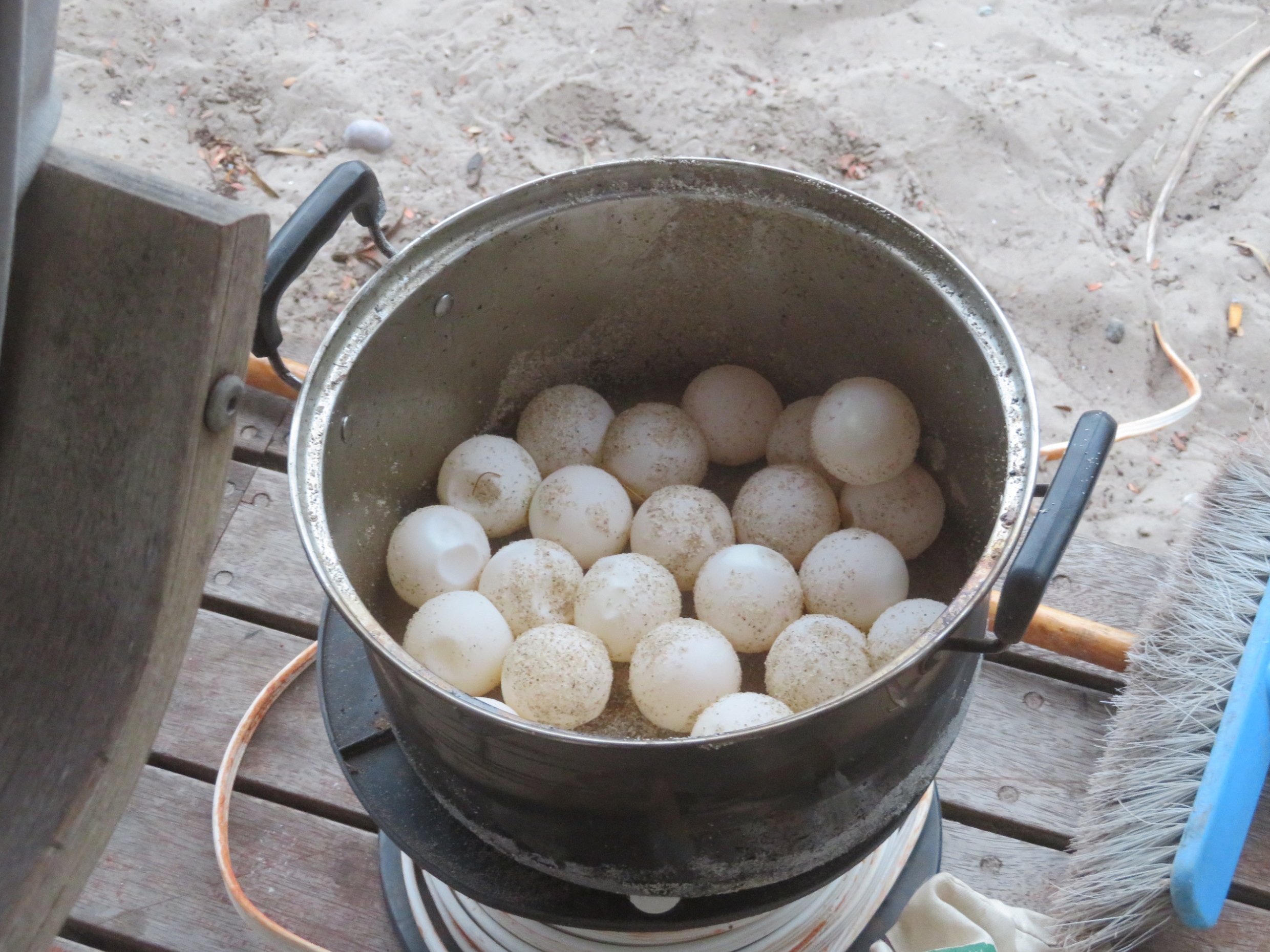
Turtle eggs.
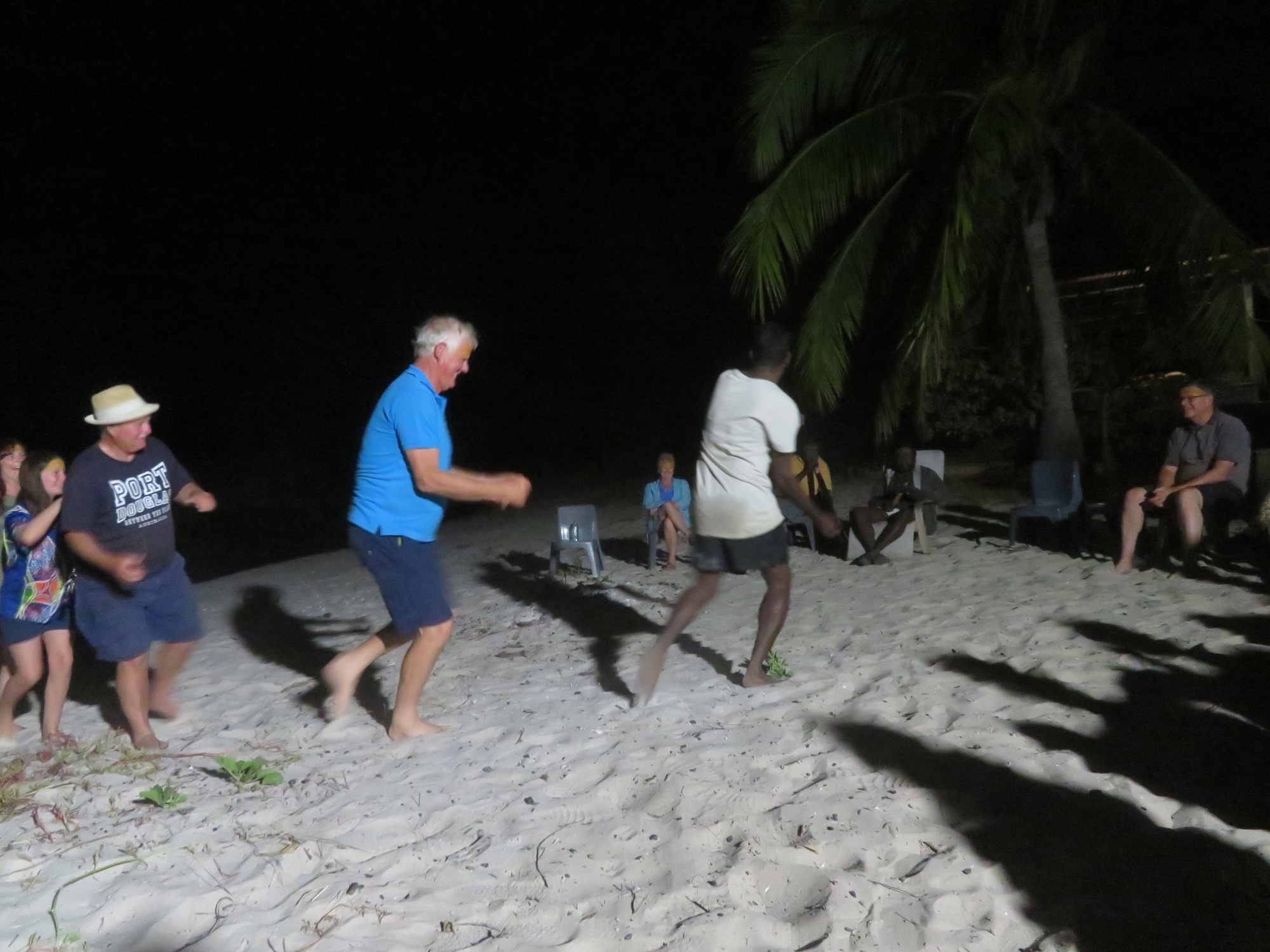
Doing the tractor dance!

Timmy on the right. His cousin playing the yidaki.

Nike. Thank goodness for long-range lenses. No desire to ever be this close to the gorgeous little critter.
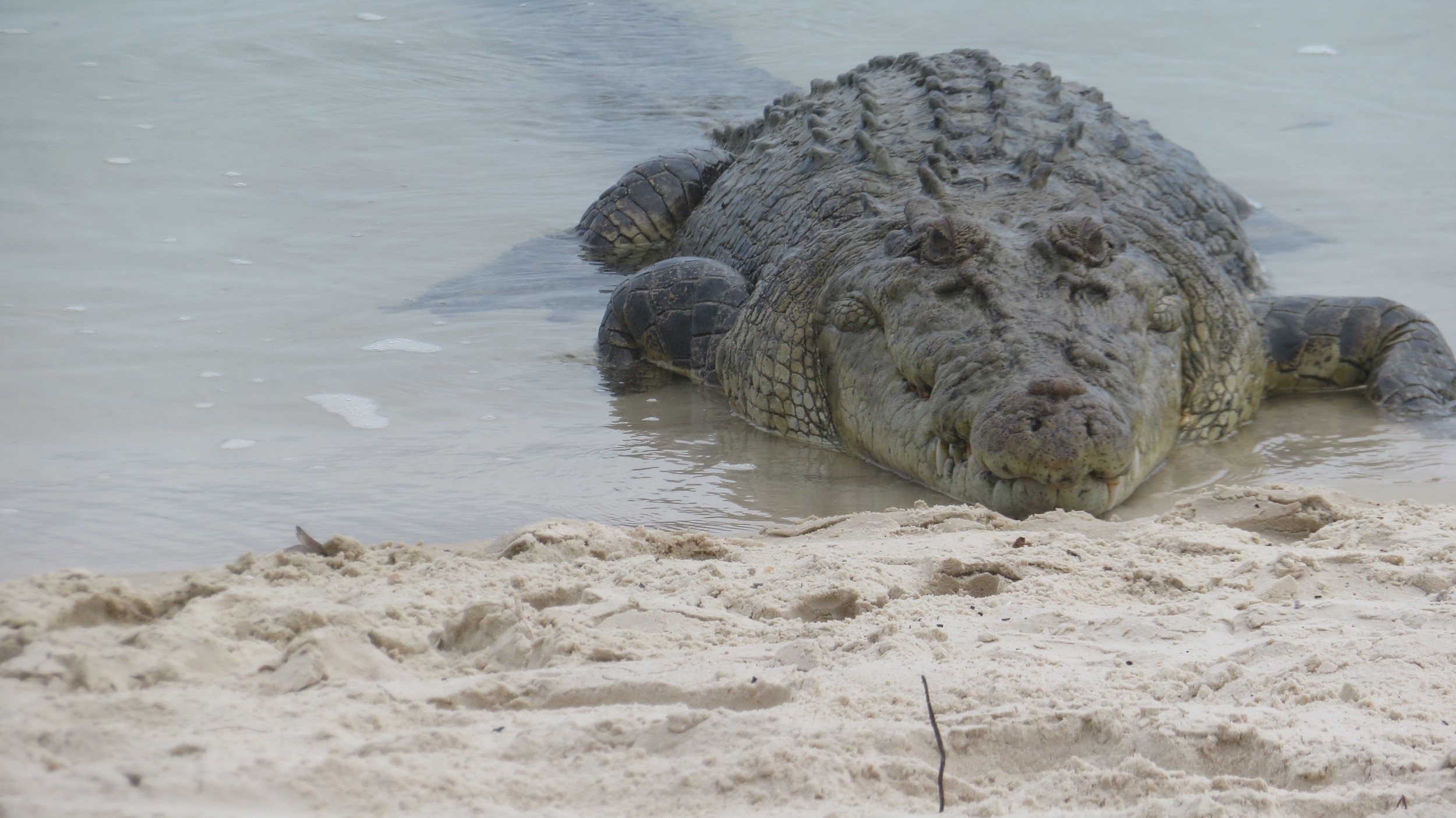
Nike, about to come ashore at our campsite to parttake of some of the offerings from the recently killed turtle.
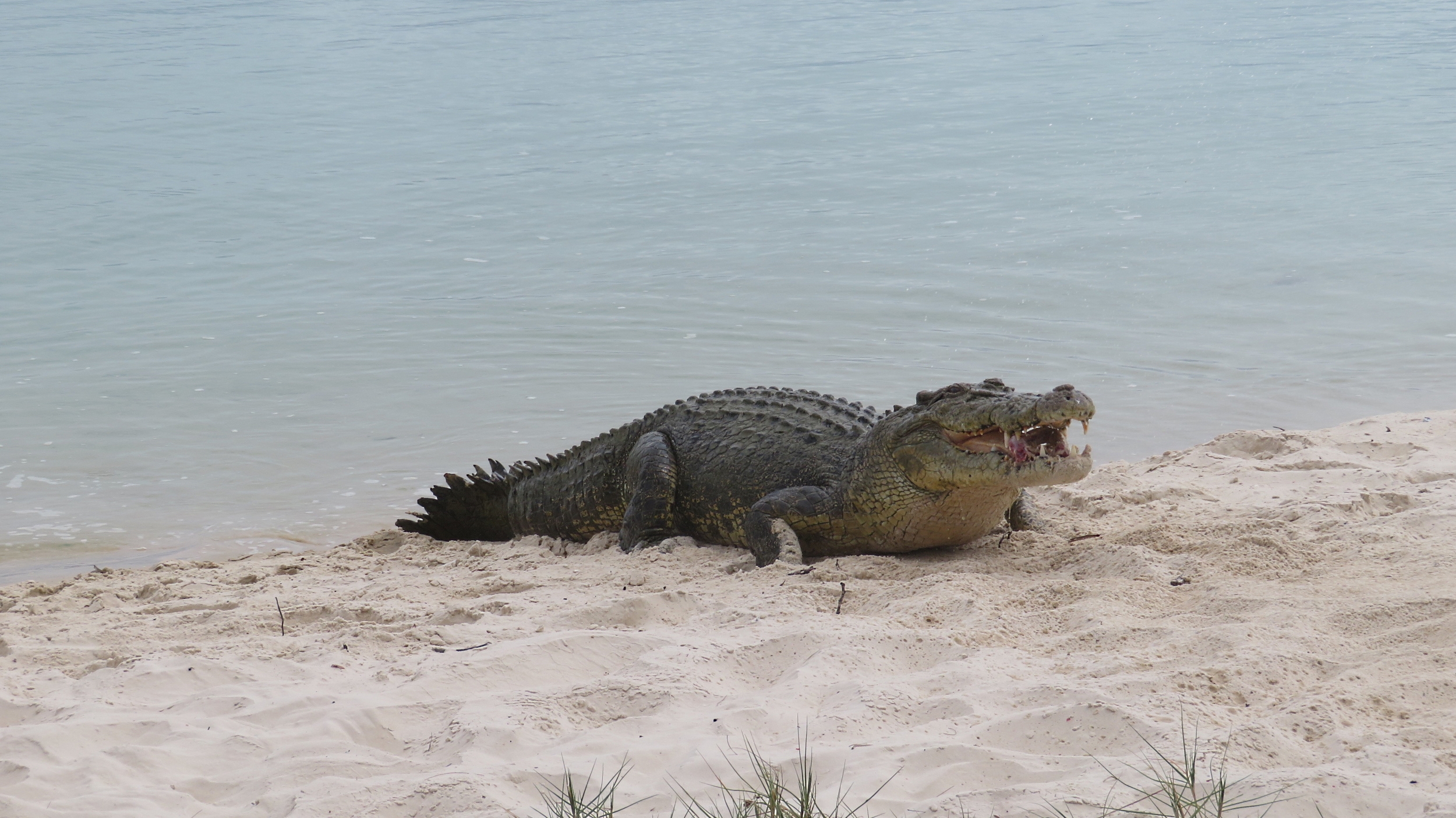
Yum – got a mouthful of something delicious. Not human, thank goodness.
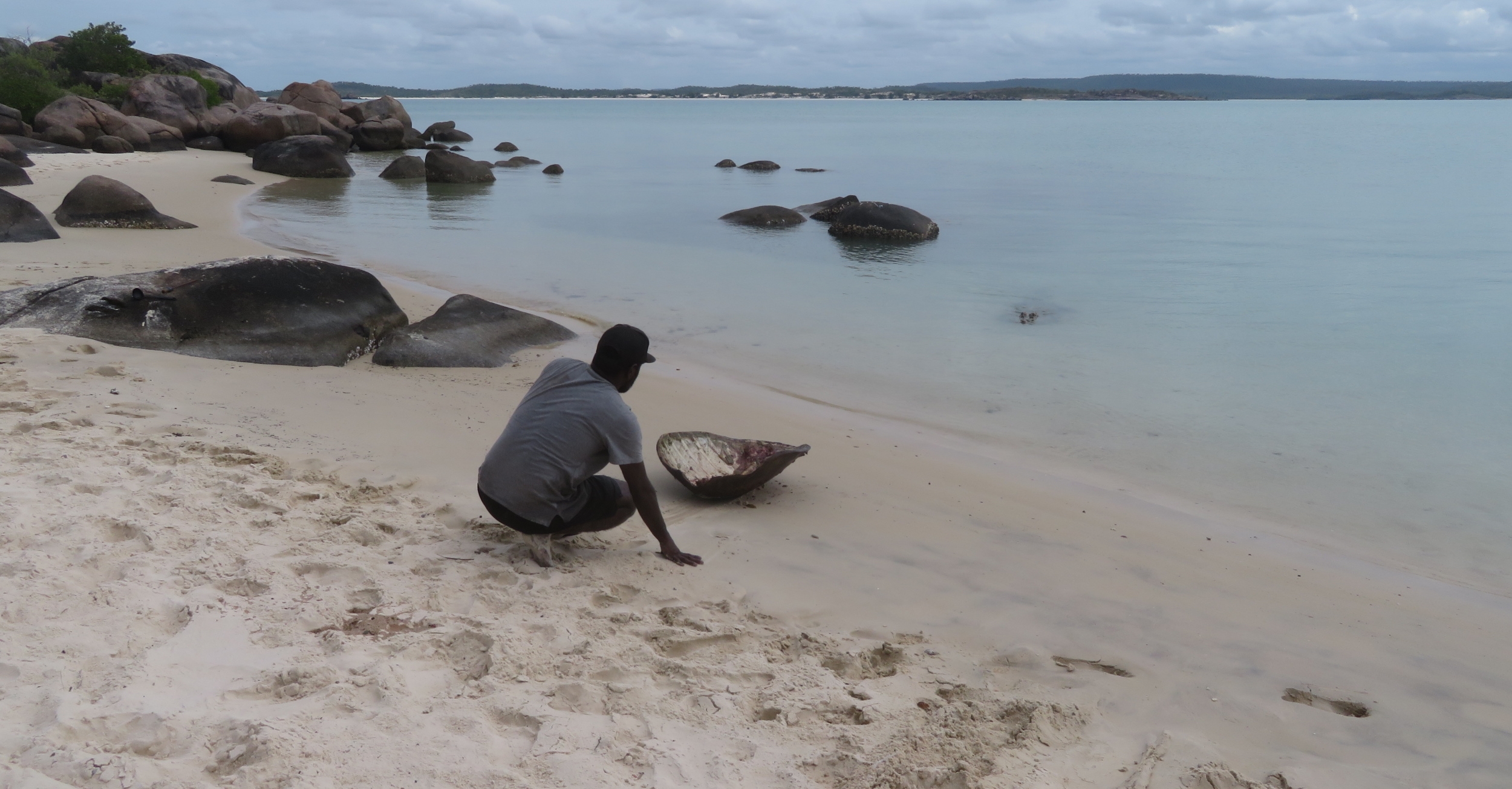
Randy calling Nike in to take the carapace of the turtle. You can see just his eyes out of the water and the shadow of his body. He’s swimming in. Notice there are no ripples at all. Also notice that Randy is watching him very closely.

Never lose an opportunity to spear a fish. Note that Randy is holding a woomera attached to the top of the spear to assist with force when he throws it.
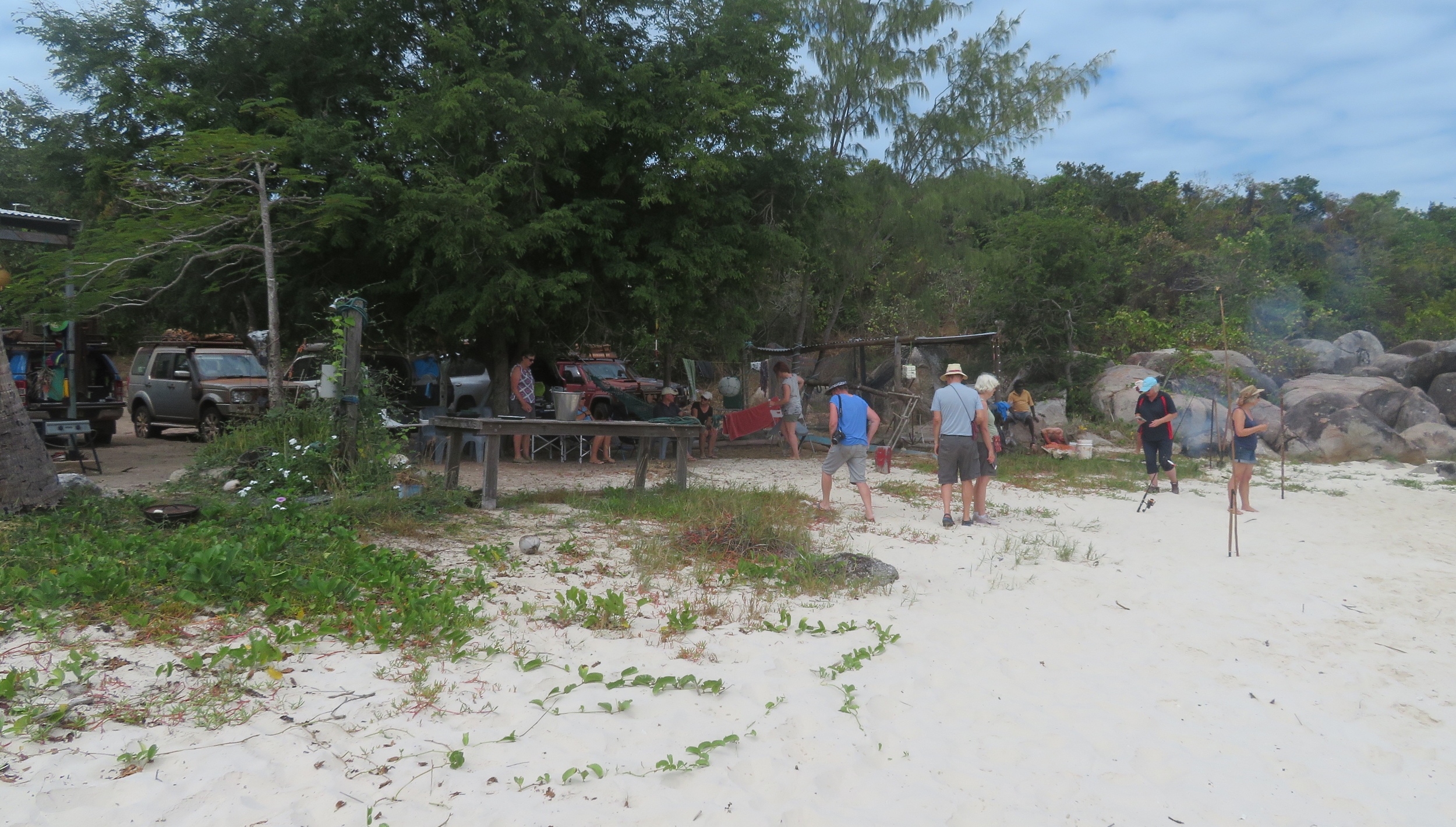
Camping area and beach, Bawaka.
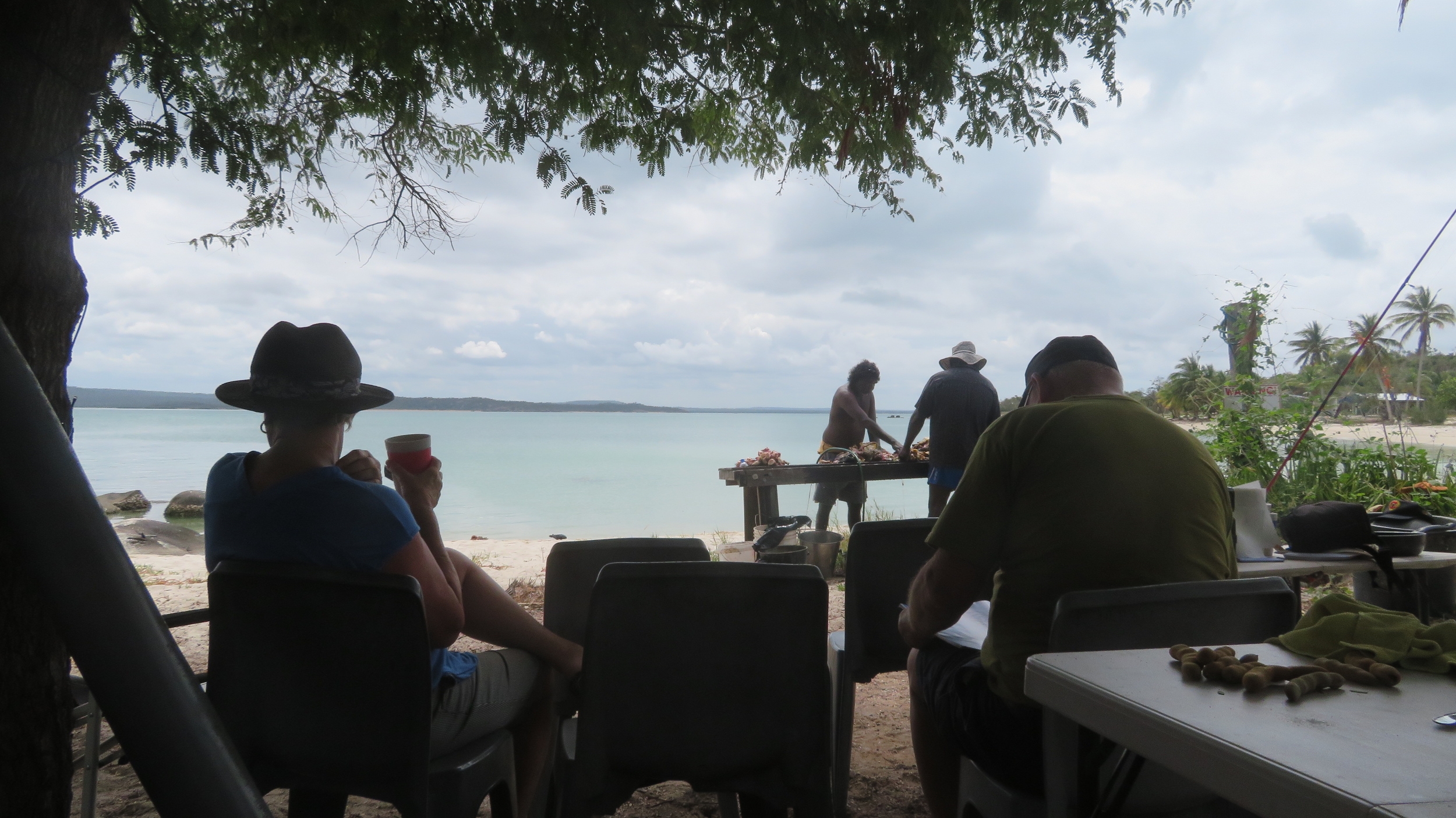
Julie and Paul chilling out while the boys sort out the finer details of who gets what of the turtle.
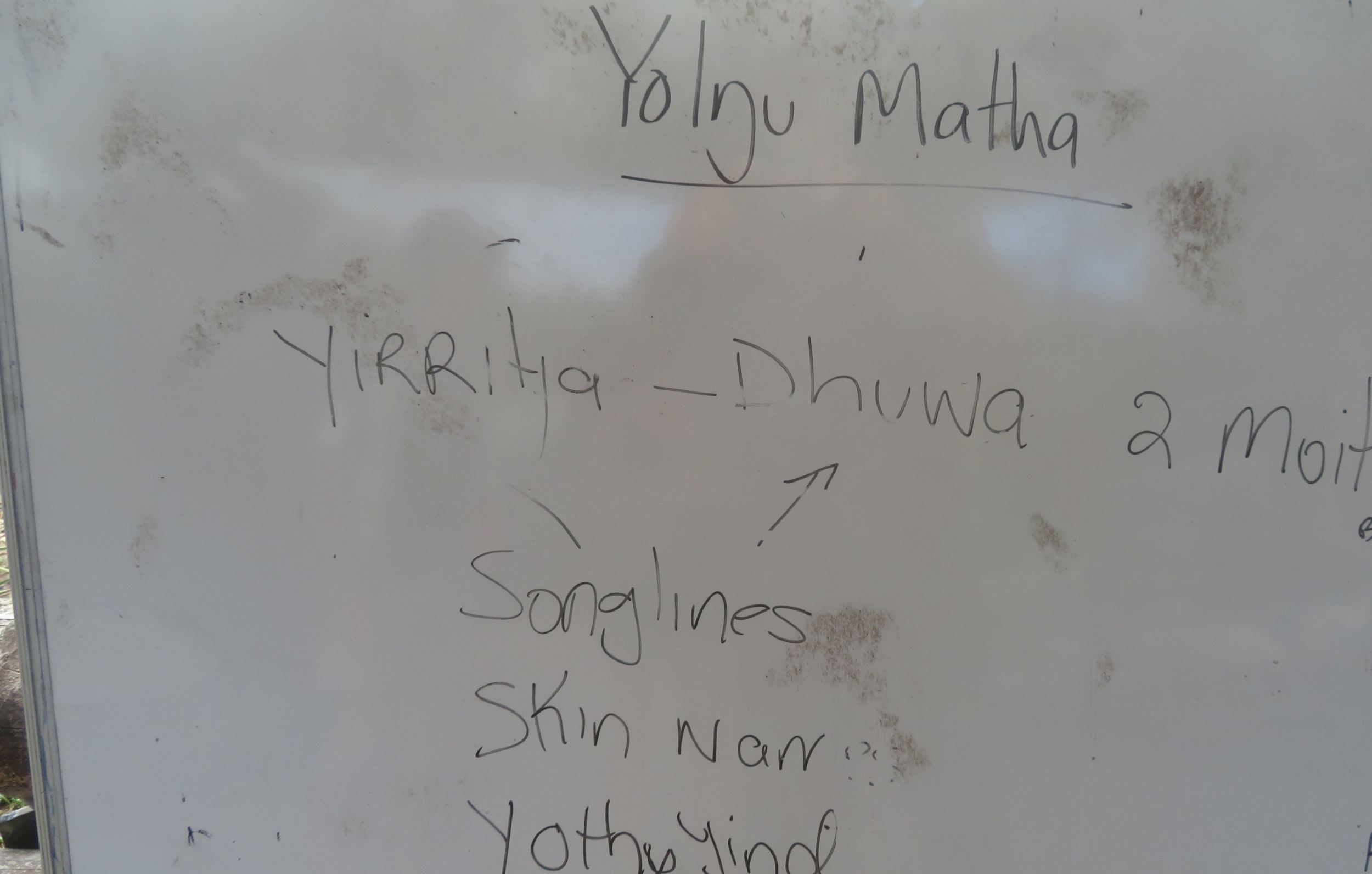
Yirritja and Dhuwa are the two moieties. Yothu yindi translates as ‘mother child’. Everything in Yolnu life belongs to one of these moieties and they determine how people interact with one another and the country in which they live. It is a very complex and extensive system.
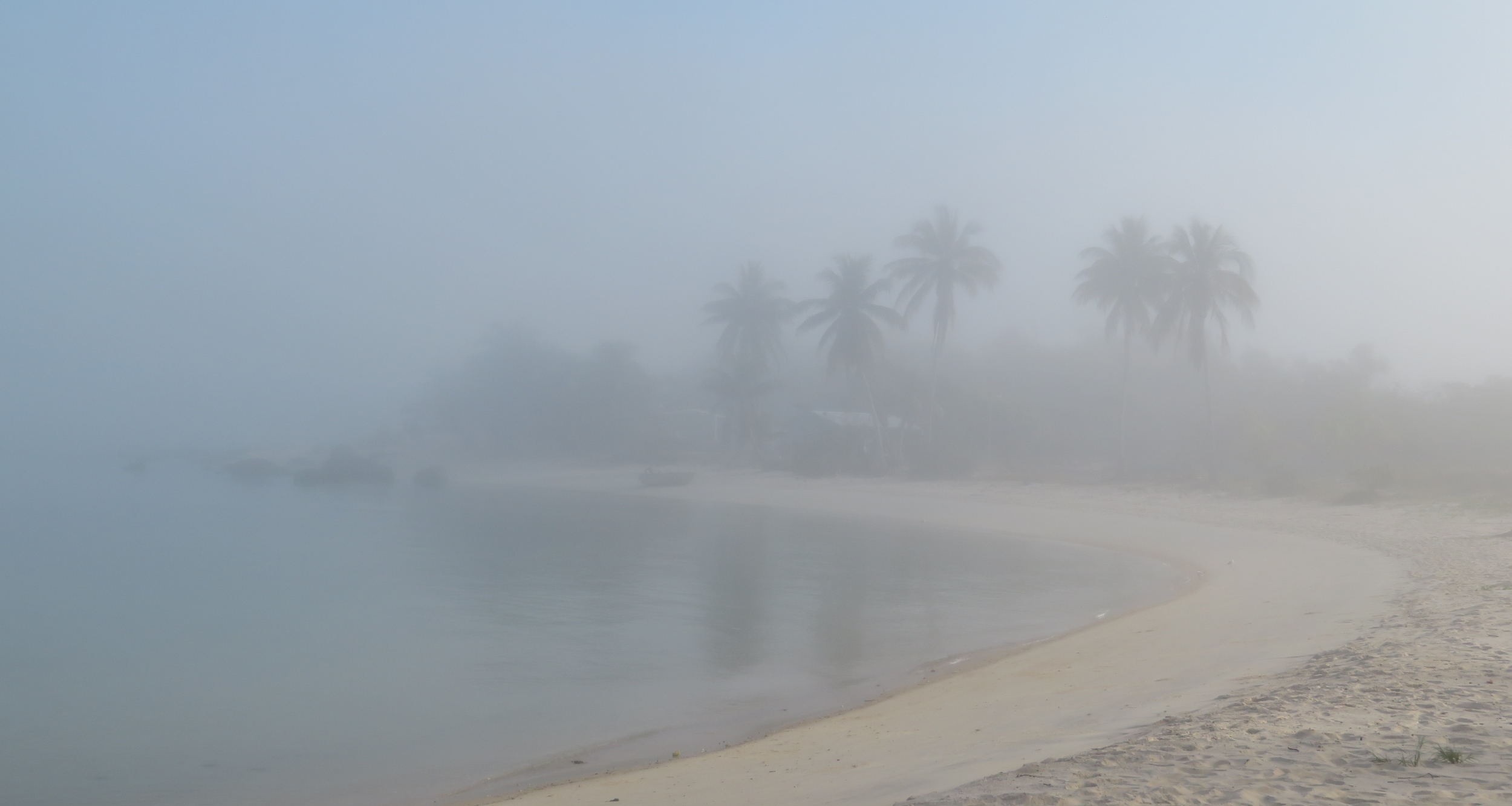
Foggy morning at Bawaka. Very unusual I’m told.
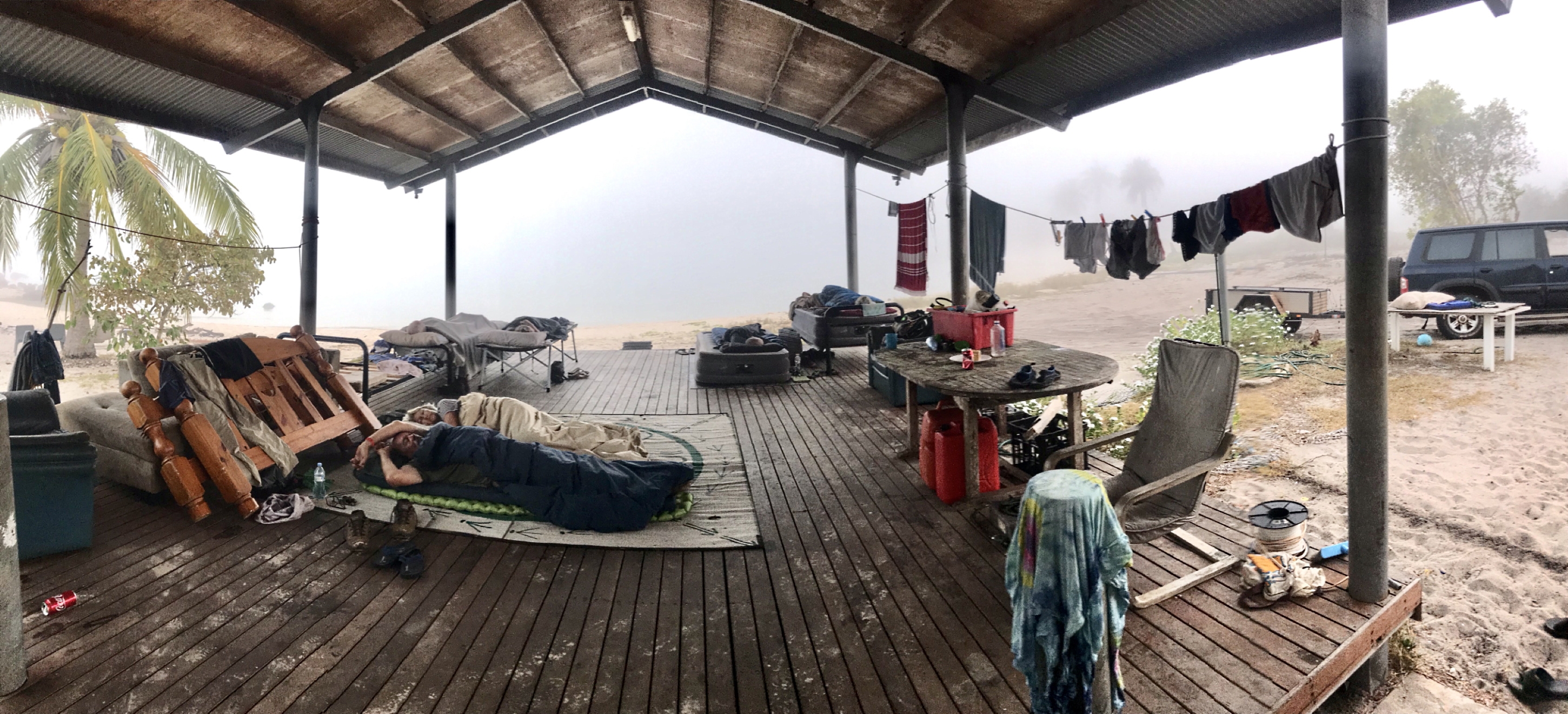
The open deck on which we slept for a couple of nights. Such a pity it’s a foggy morning when this photo was taken. You can see through the fog where the water is. That’s us on the mat at this end. Julie and Paul are sleeping on the stretchers to the far left of the photo and Steve and Jo on the big blowup mattresses on the far right of the deck. And no, none of the clothes and stuff lying around is ours.
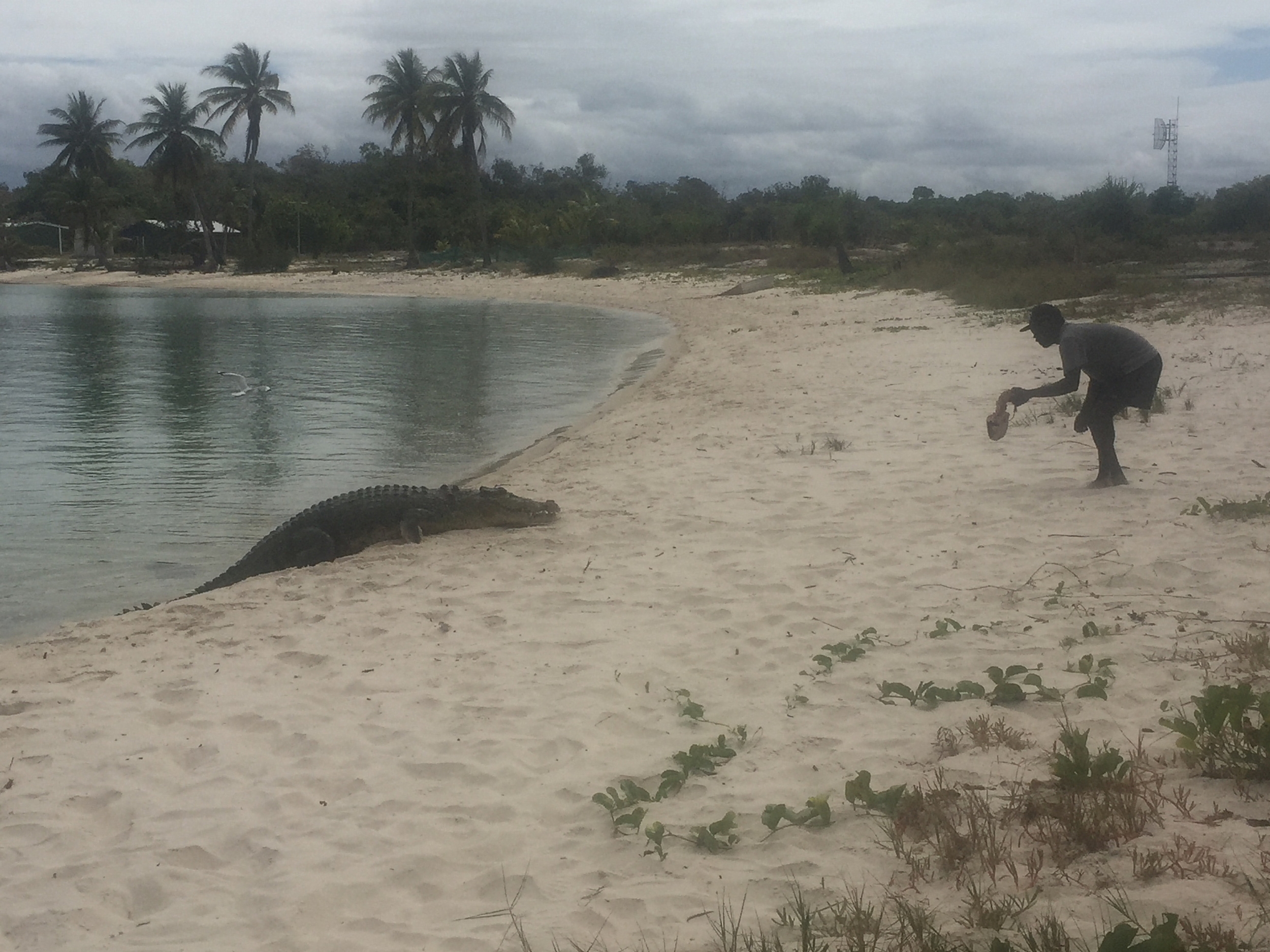
Randy would bring Nike right up onto the beach to get his treats.
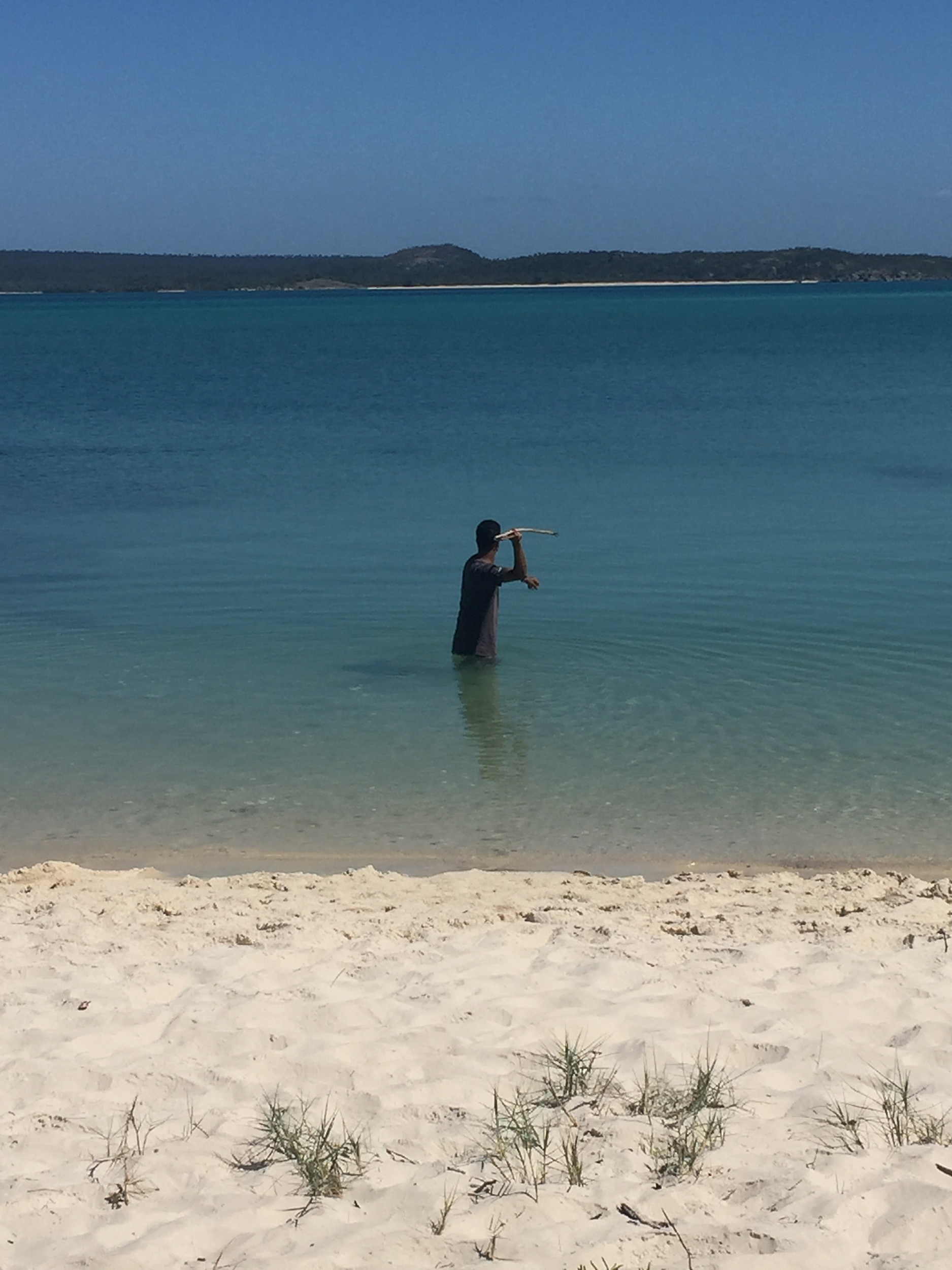
Randy, doing a spot of fishing.
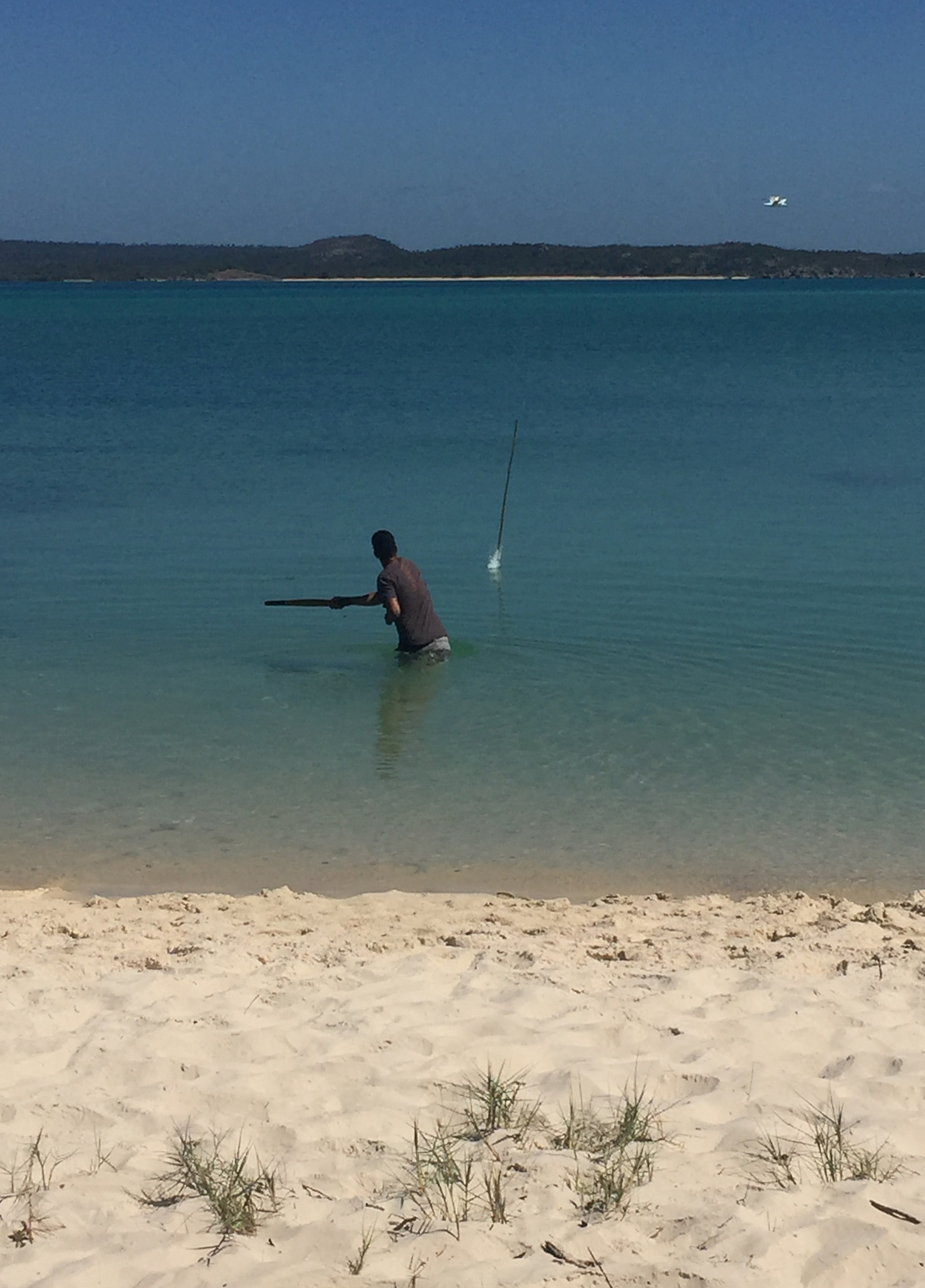
I love this photo of Randy fishing.

The lovely, vivacious Sienna who spent some time talking with us about her life and plans.
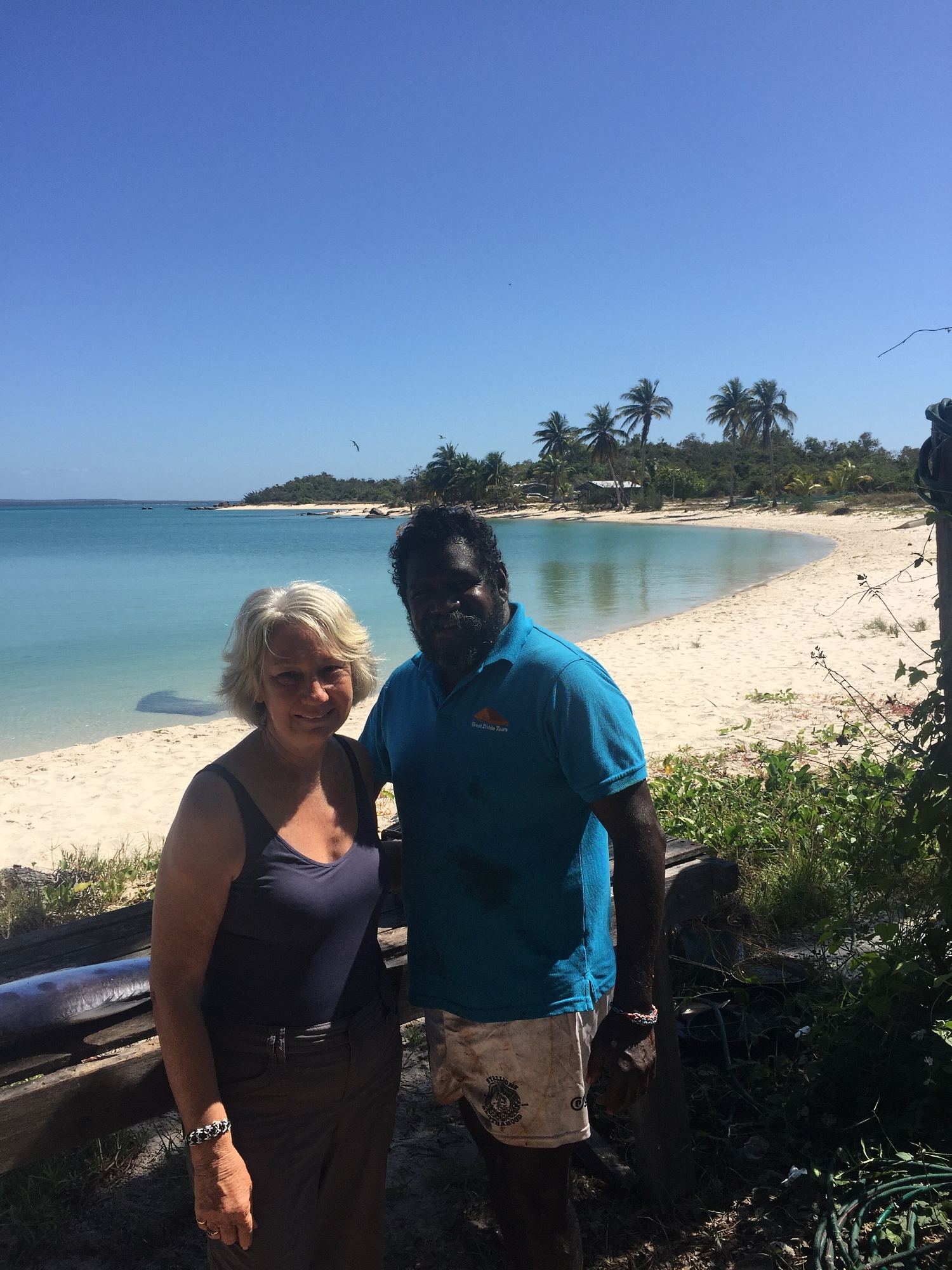
Timmy and I. He shared his homeland and his life with us in a very generous way. What an amazing experience!
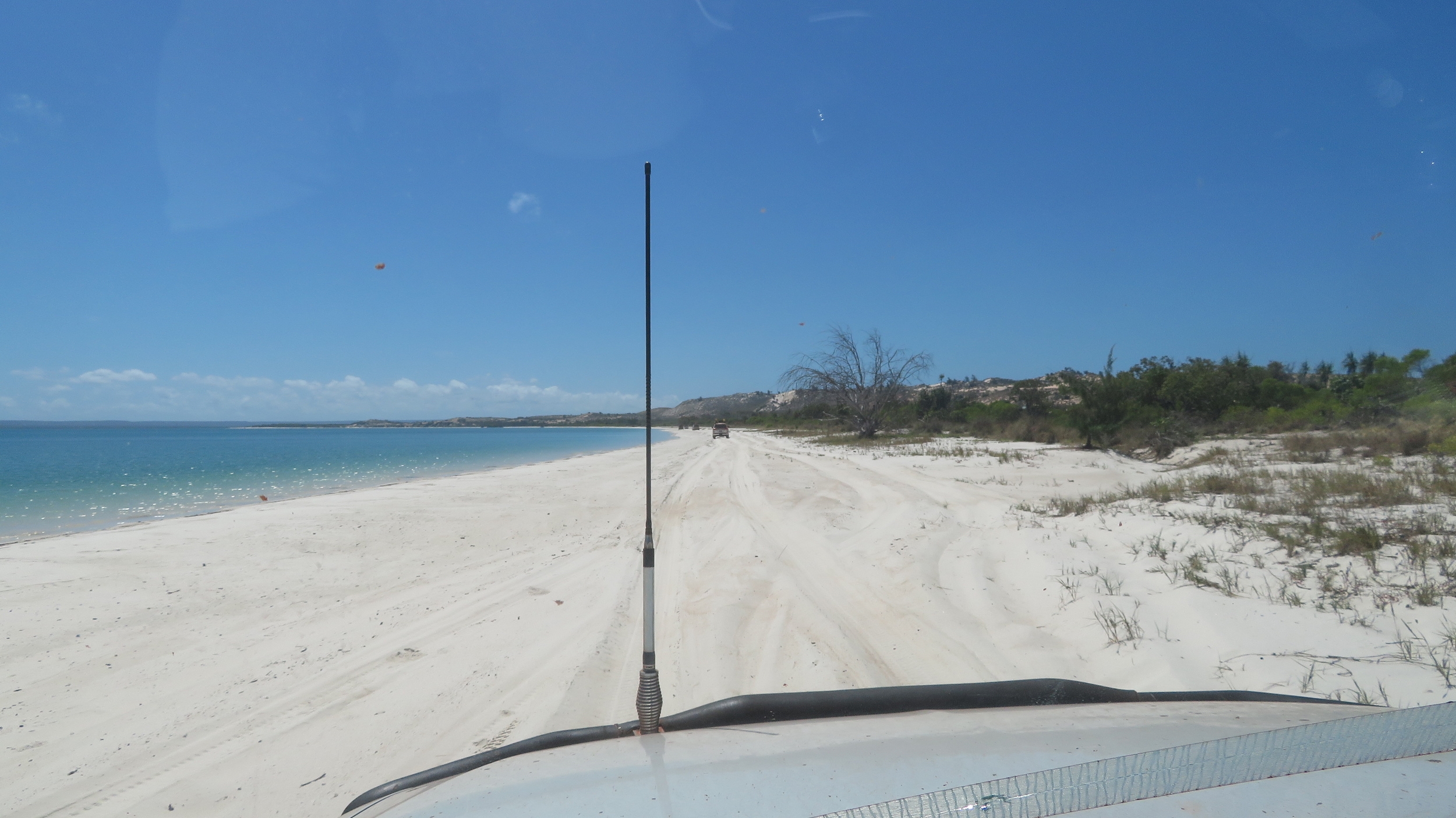
Just another photograph as we leave of the beautiful bay on which Bawaka is situated.
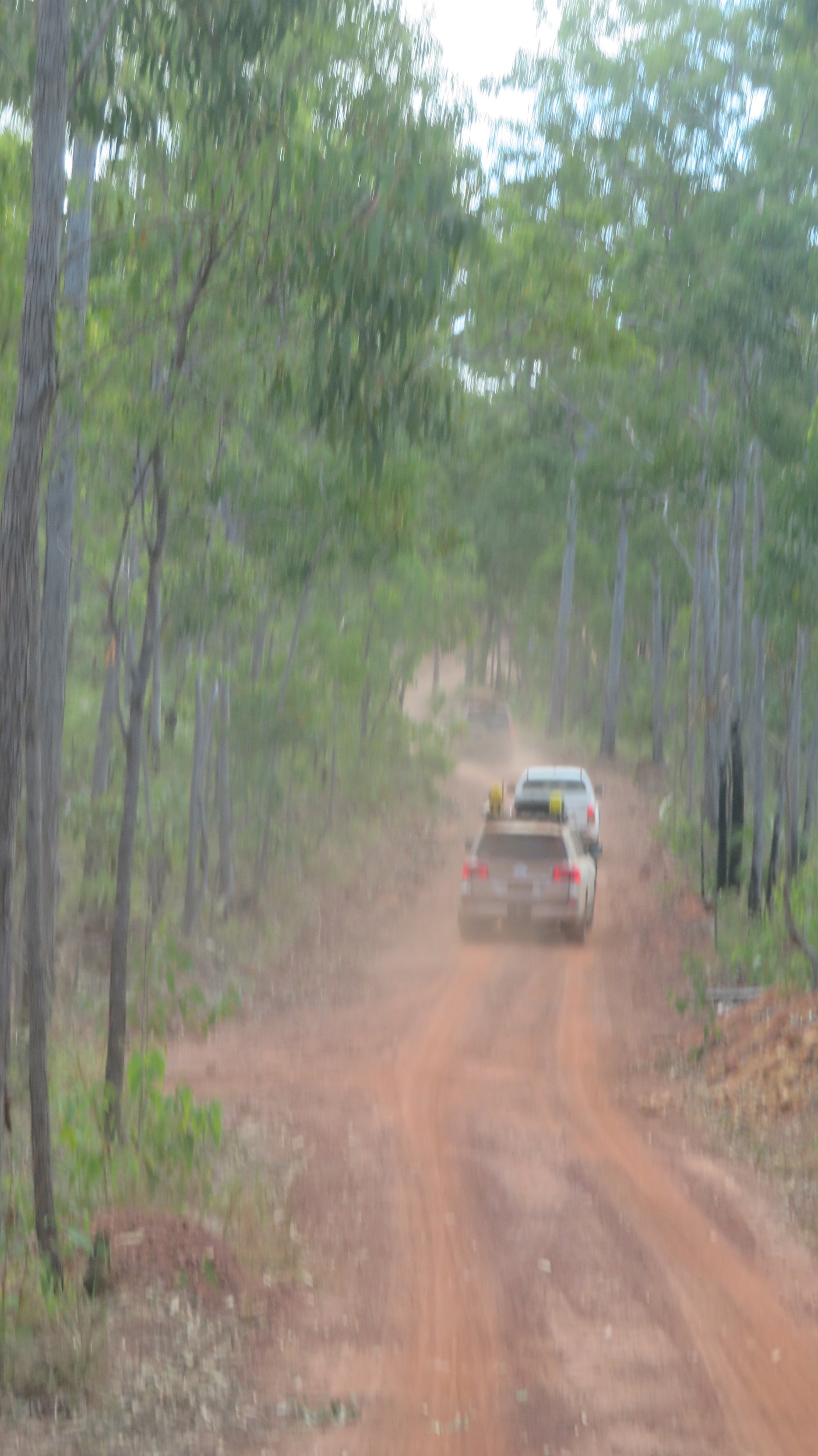
Off the beach and through the bush as we leave Bawaka.


Back in Nhulunbuy, chatting about the very unique time we had at Bawaka.
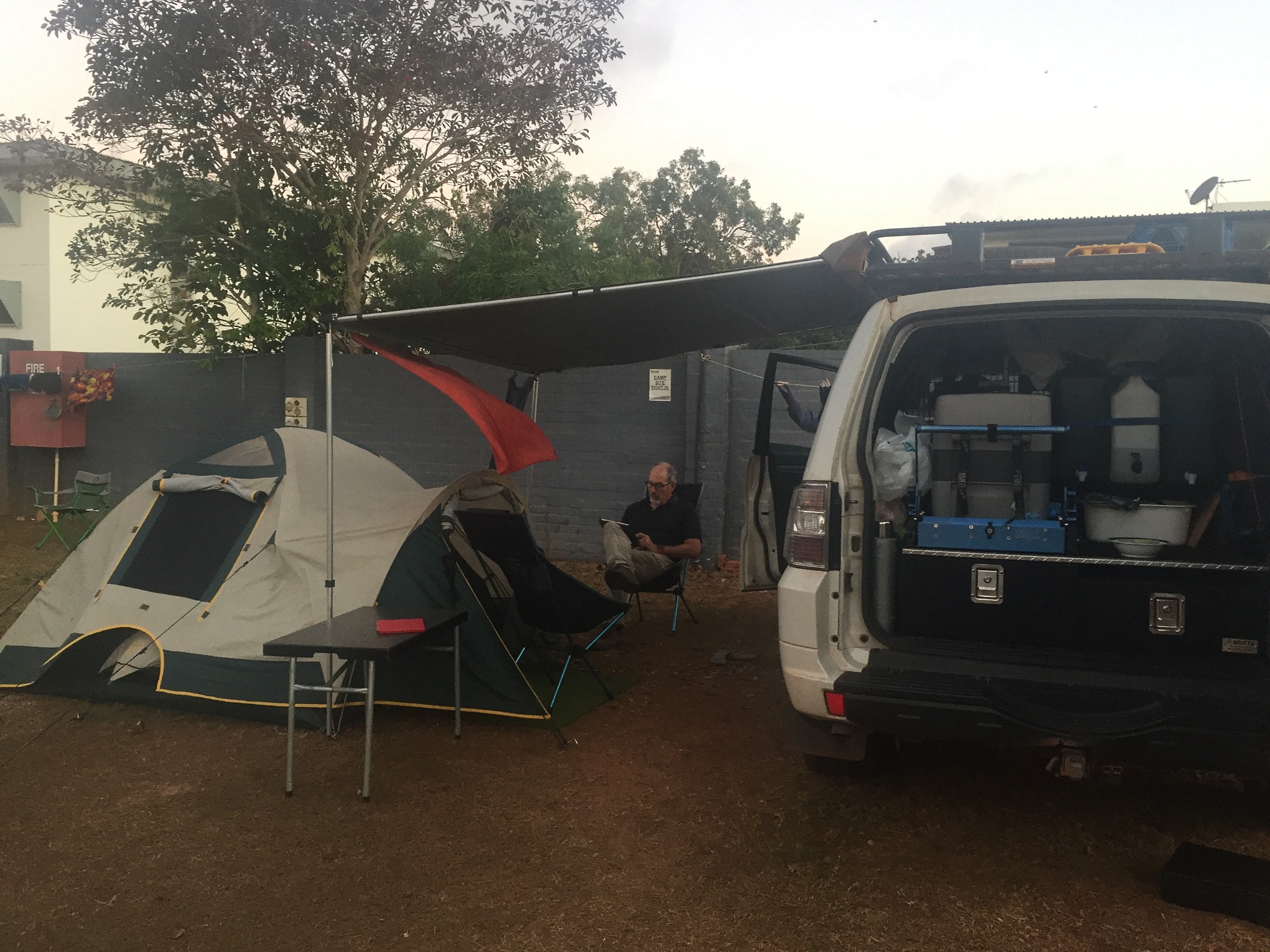
Chilling out at Nhulunbuy.
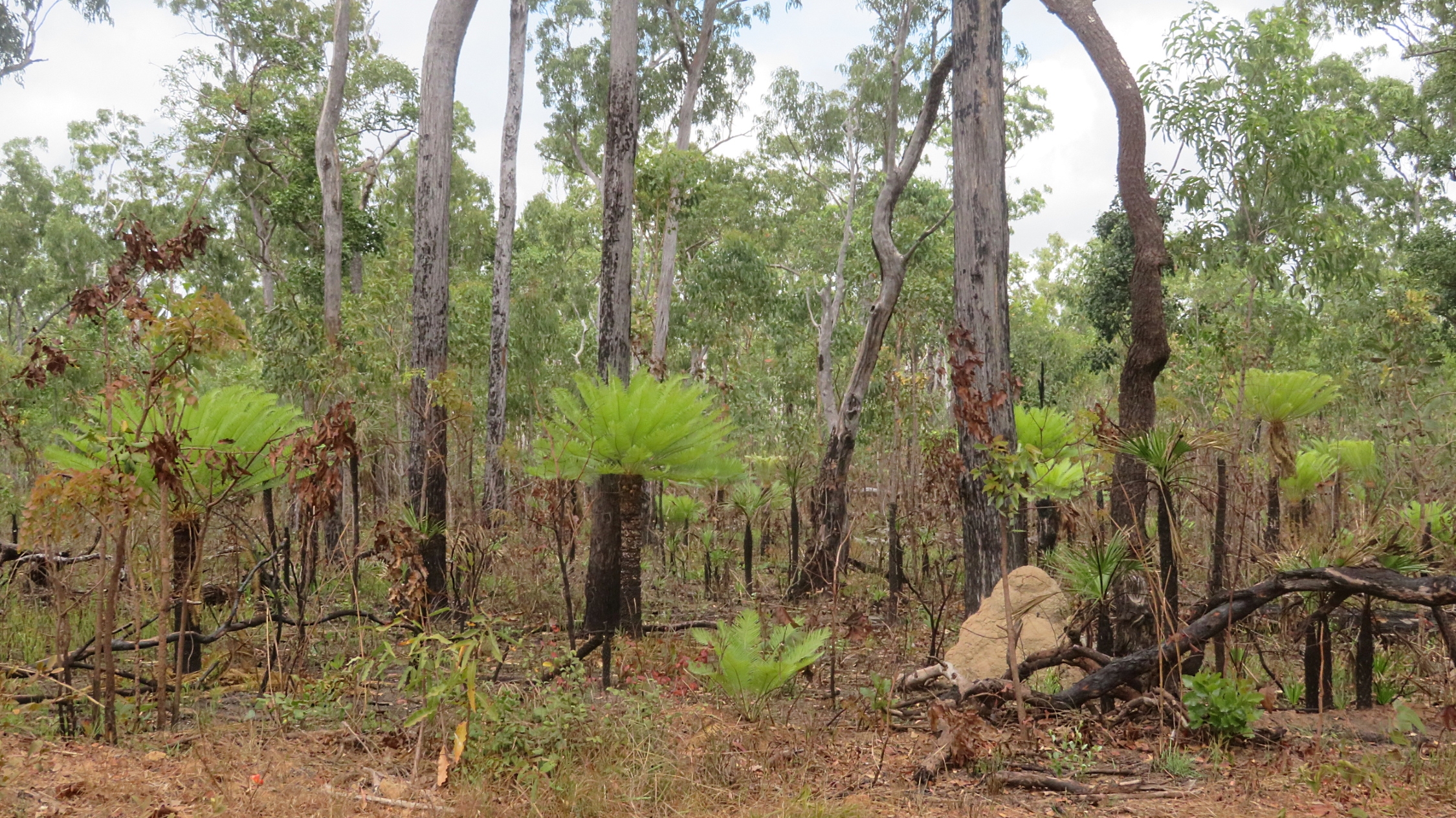
Regrowth following the slow-moving fires that are a common site early dry season. Note the termite mound – not a magnetic one. There are around 300 species of termite in Australia, with only 2 types building magnetic mounds.
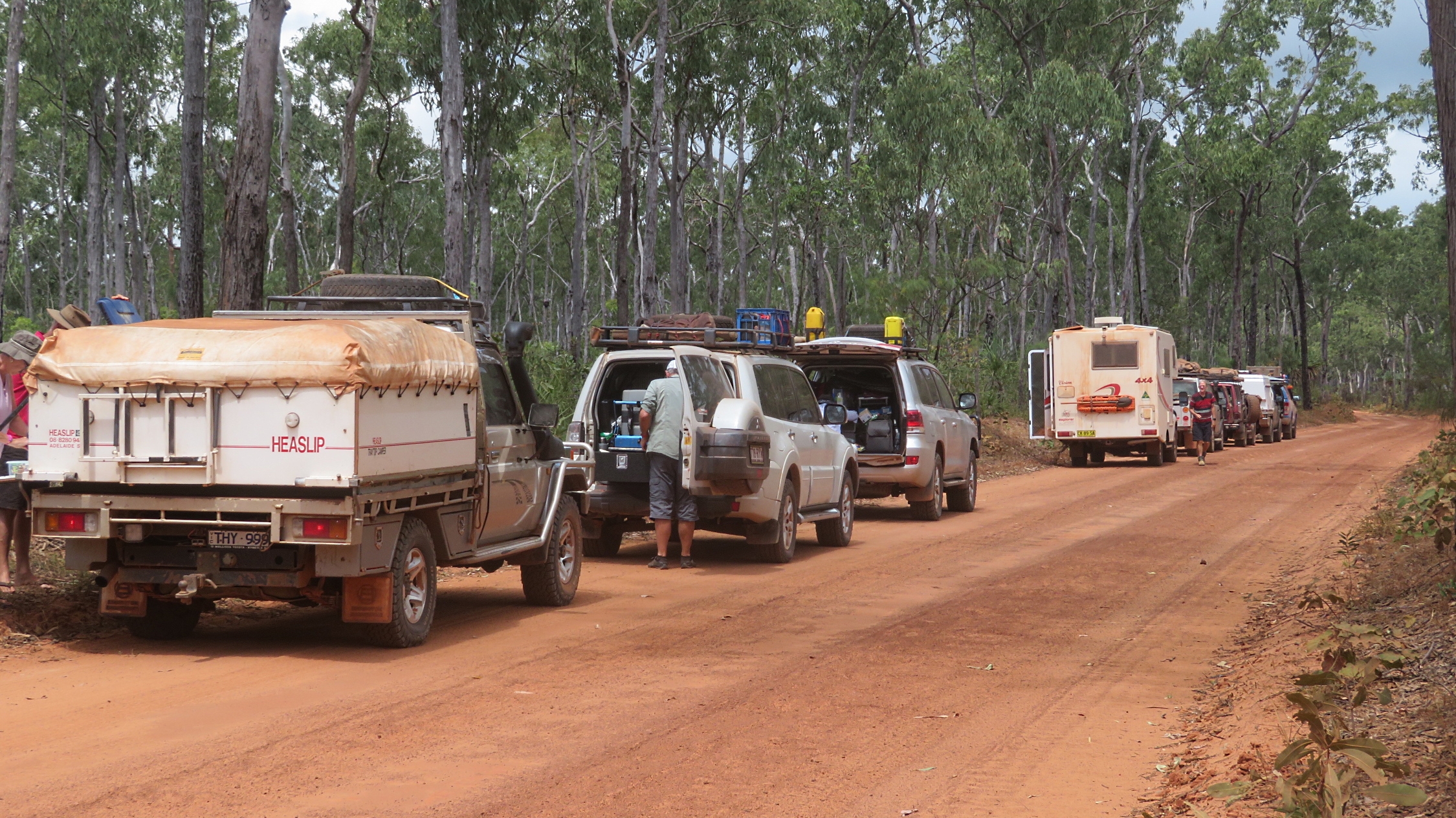
Lunch break on the way to Baniyala. Only occasionally did we see oncoming or passing traffic on all of these roads.

At Duhuluwuy reserve overlooking Blue Mud Bay and admiring Groote Eylandt.

Oh it was us! Dick, Steve, Denise and Pat. World problems solved!
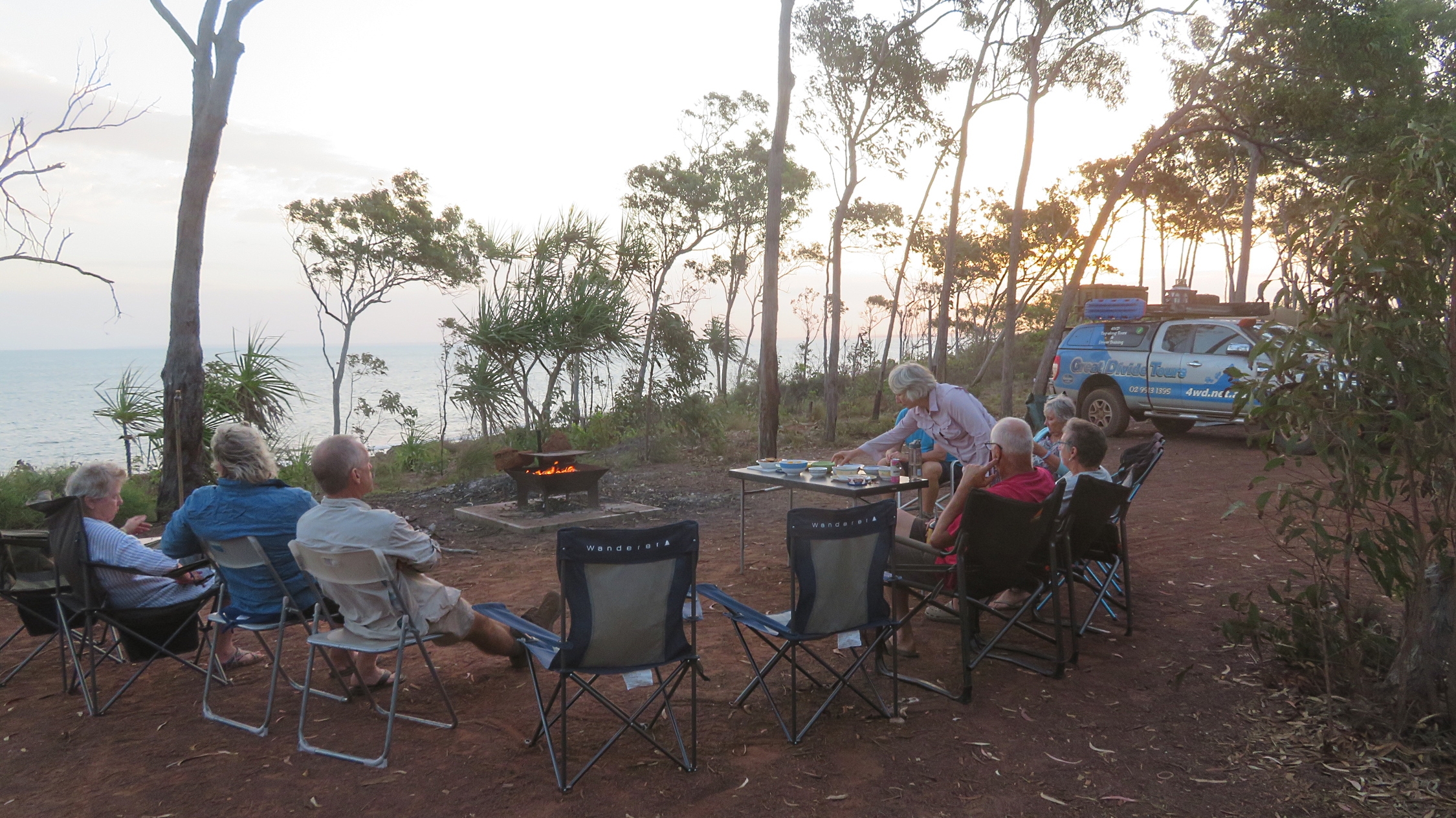
Enjoying a beautiful sunset at Dhuluwuy Bay, near Baniyala.

Moonrise over Blue Mud Bay. Wow, could life be more perfect.
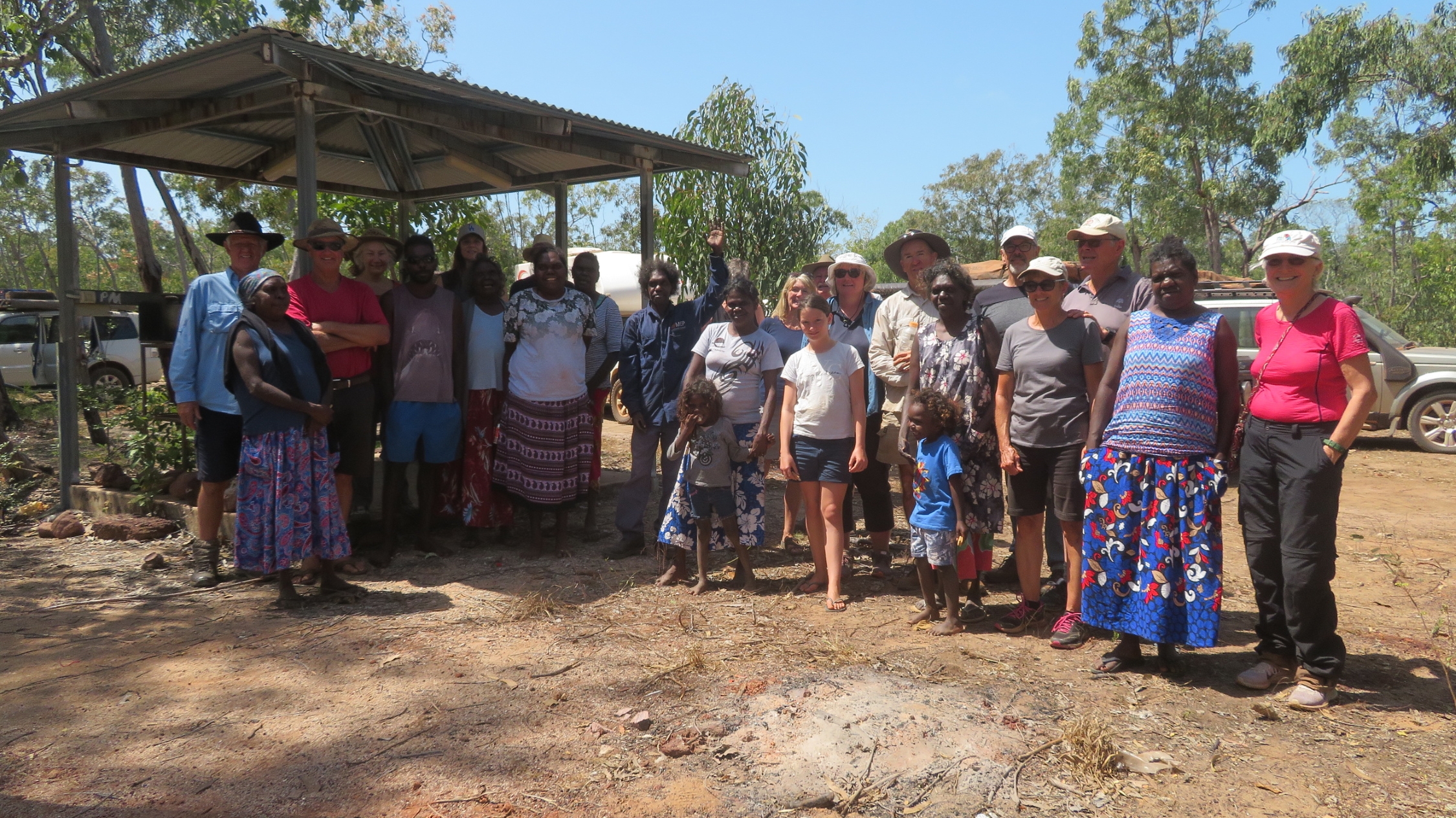
Many of the Baniyala clan came out to meet us.
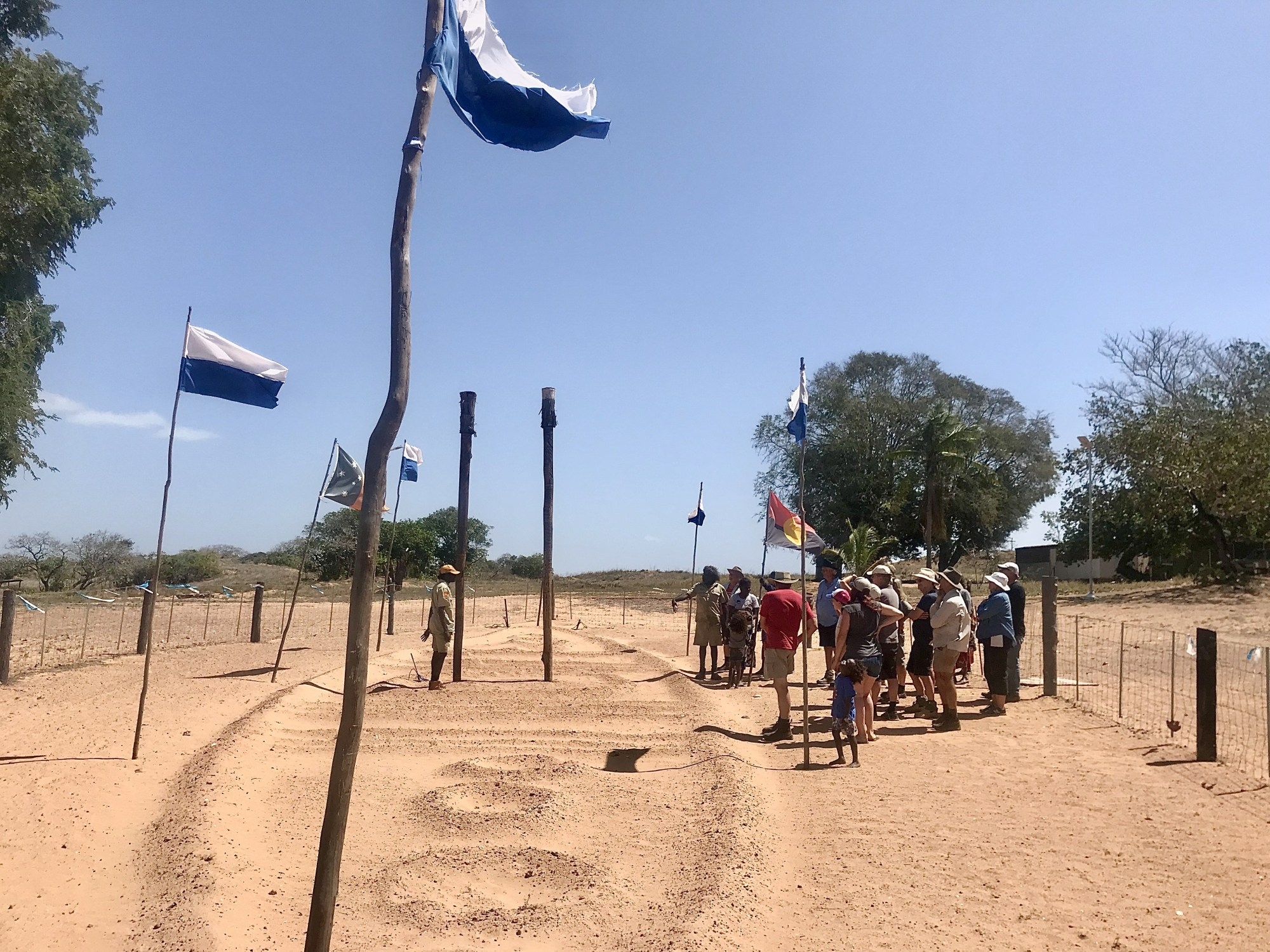
This large sand sculpture represents their land in relation to other places plus the sea and the clouds. (Photo courtesy Pat Evans)

This was the entry to the sacred stingray site, where they go before hunting stingrays. Without permission and a guide one would never see this place or know its significance. (Photo courtesy Pat Evans)
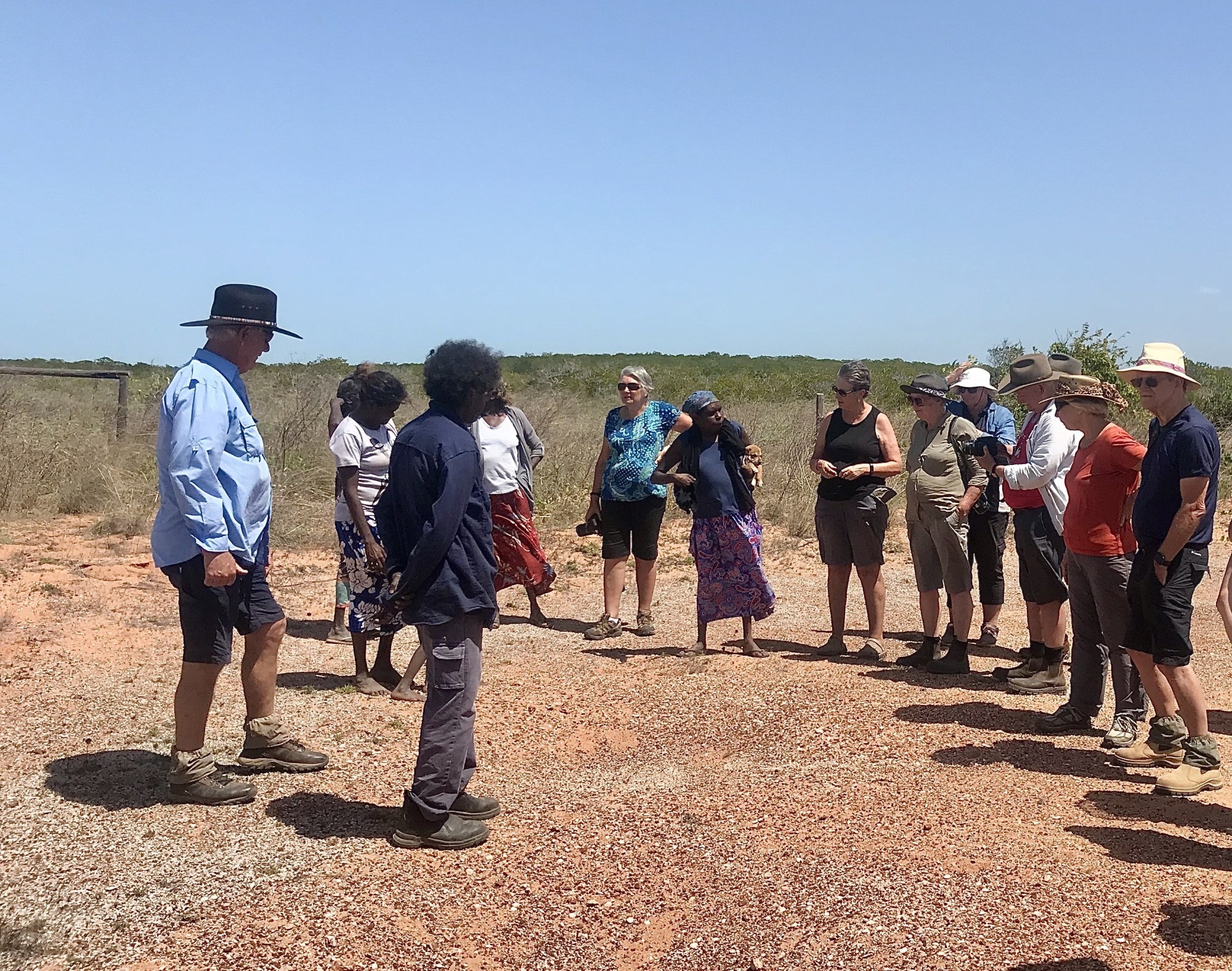
Here we are looking at the stingray sand sculpture. They take sand from the eye holes and name the places they plan to hunt stingrays, which helps them on the hunt. (Photo courtesy Pat Evans)

We’re looking here at the sand representation of the lands of the Blue Mud Bay area. It’s difficult to photograph and is inside the fenced off area.

Someone has been interuppted in the middle of yidaki-making. Note they’re using a branch of a hollowed-out stringy bark tree.
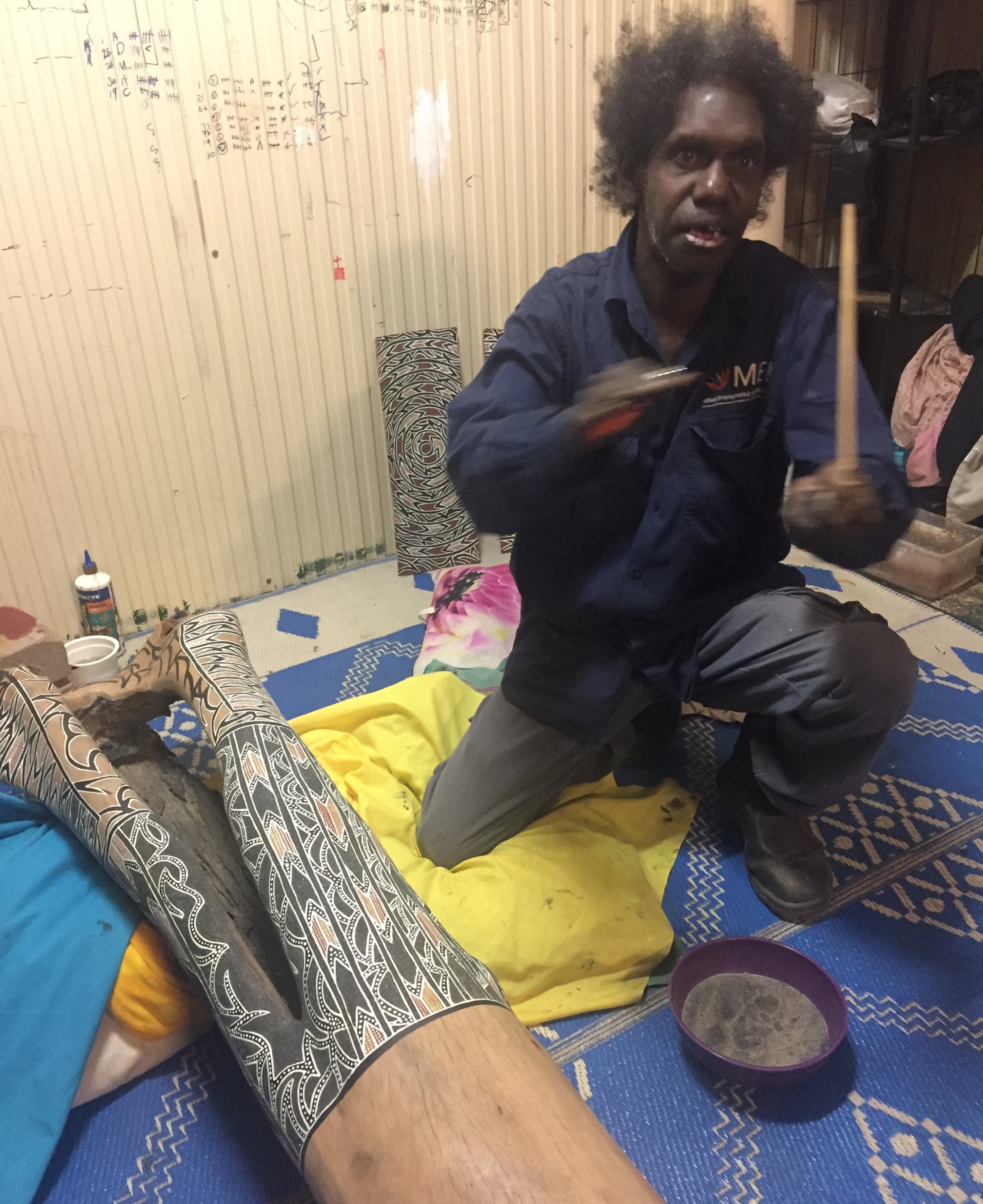
The artist explains to us how he paints first with glue then sprinkles the coloured sand he needs over it.
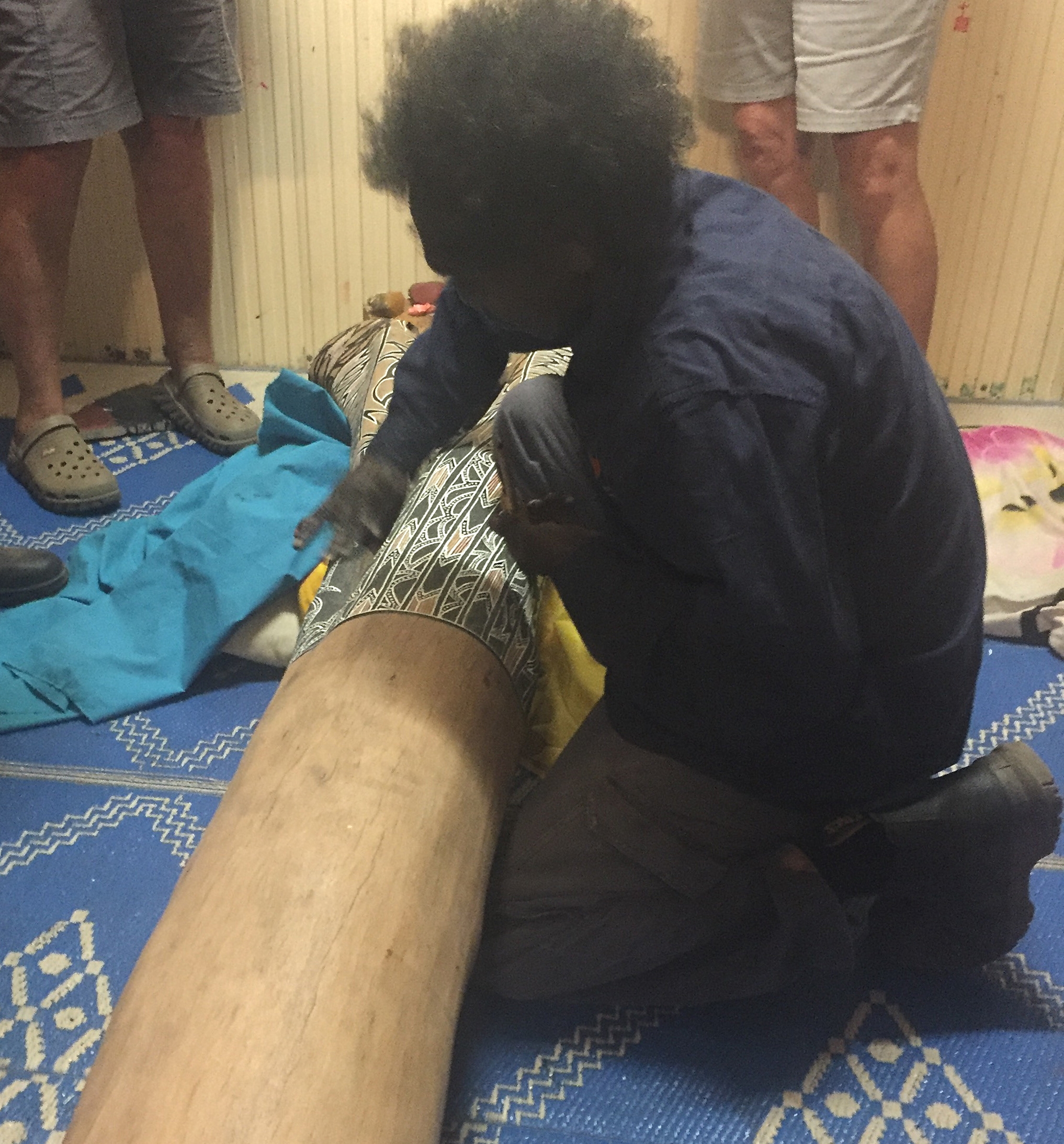
This very talented artist shows us his sand painting. He’ll soon have covered the whole log in this beautiful pattern using just coloured sands.

A closer look at the detail of the sand painting on the log.
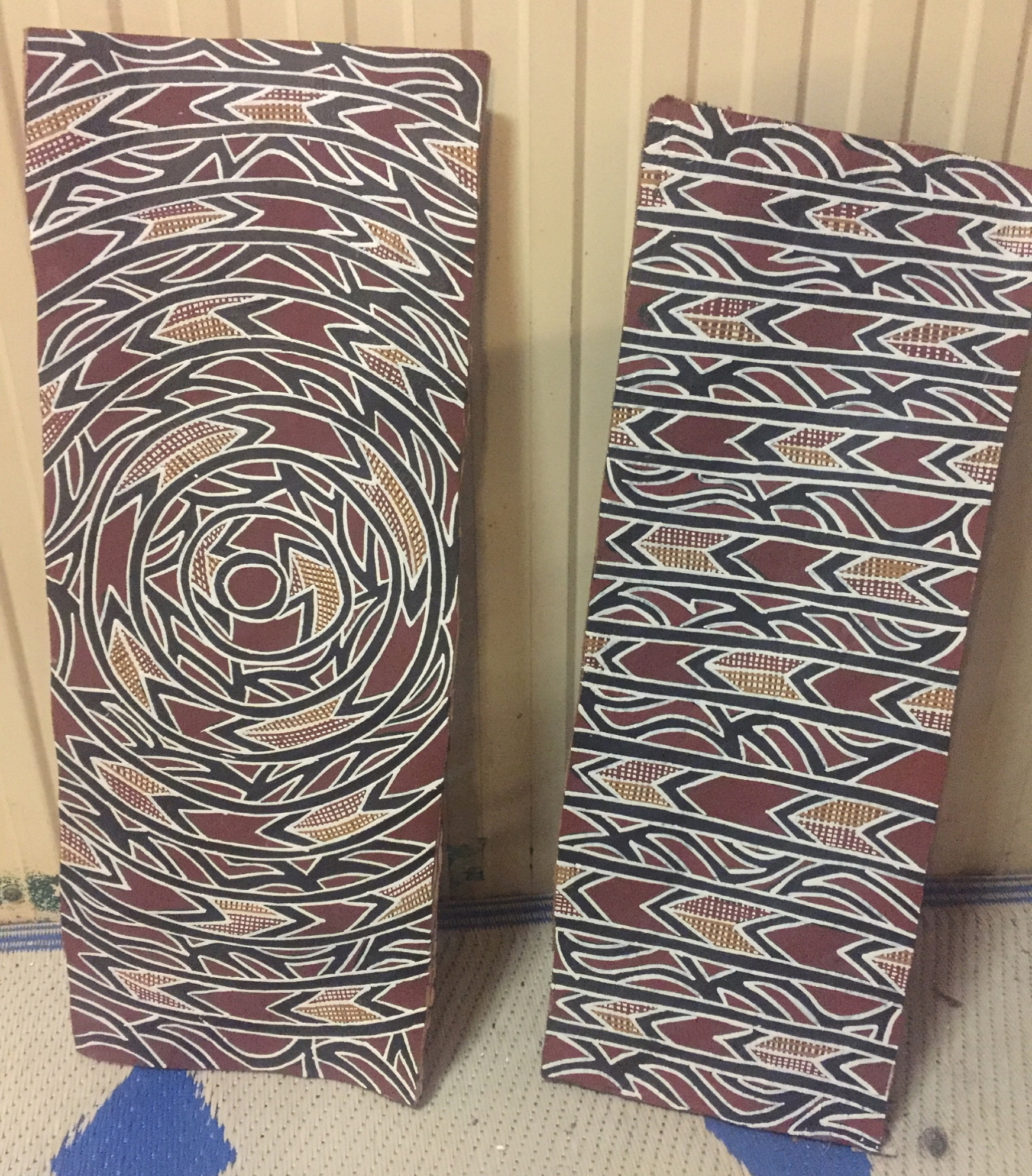
Two beautiful completed sand art works – made on commission unfortunately. I would have loved to have bought one.

The pandanus palm has been but down and suitable fronds are being stacked, ready for drying and eventually making one of the wonderful woven baskets they are so famous for.
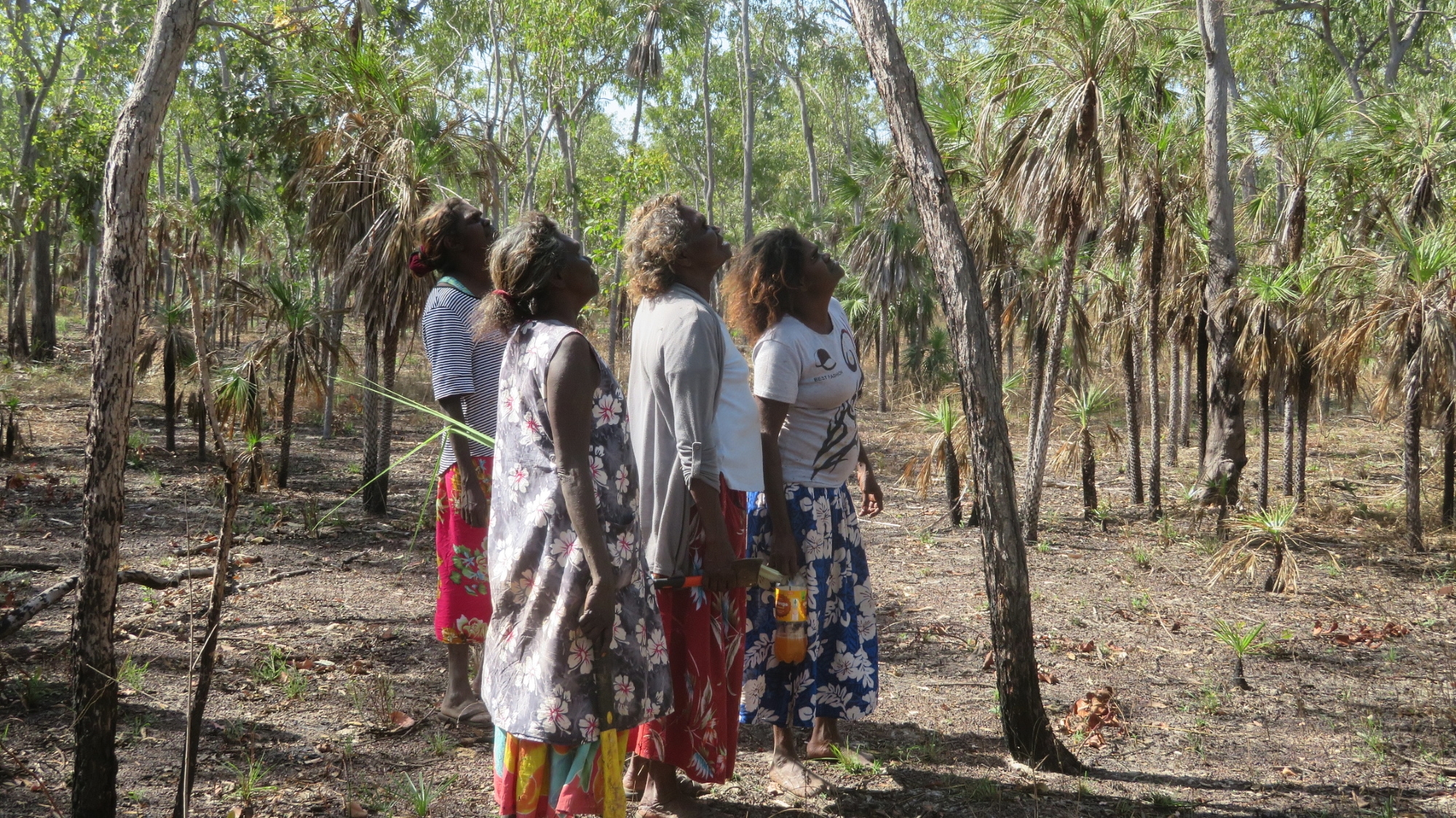
Ah ha, found one! Look – tiny little native bees flitting in and out way up at the top of that tree! Better eyesight then I have!

The tree identified as the one holding the bee hive has been hacked down, and now the spot where the bees where seen entering and leaving is being opened up.
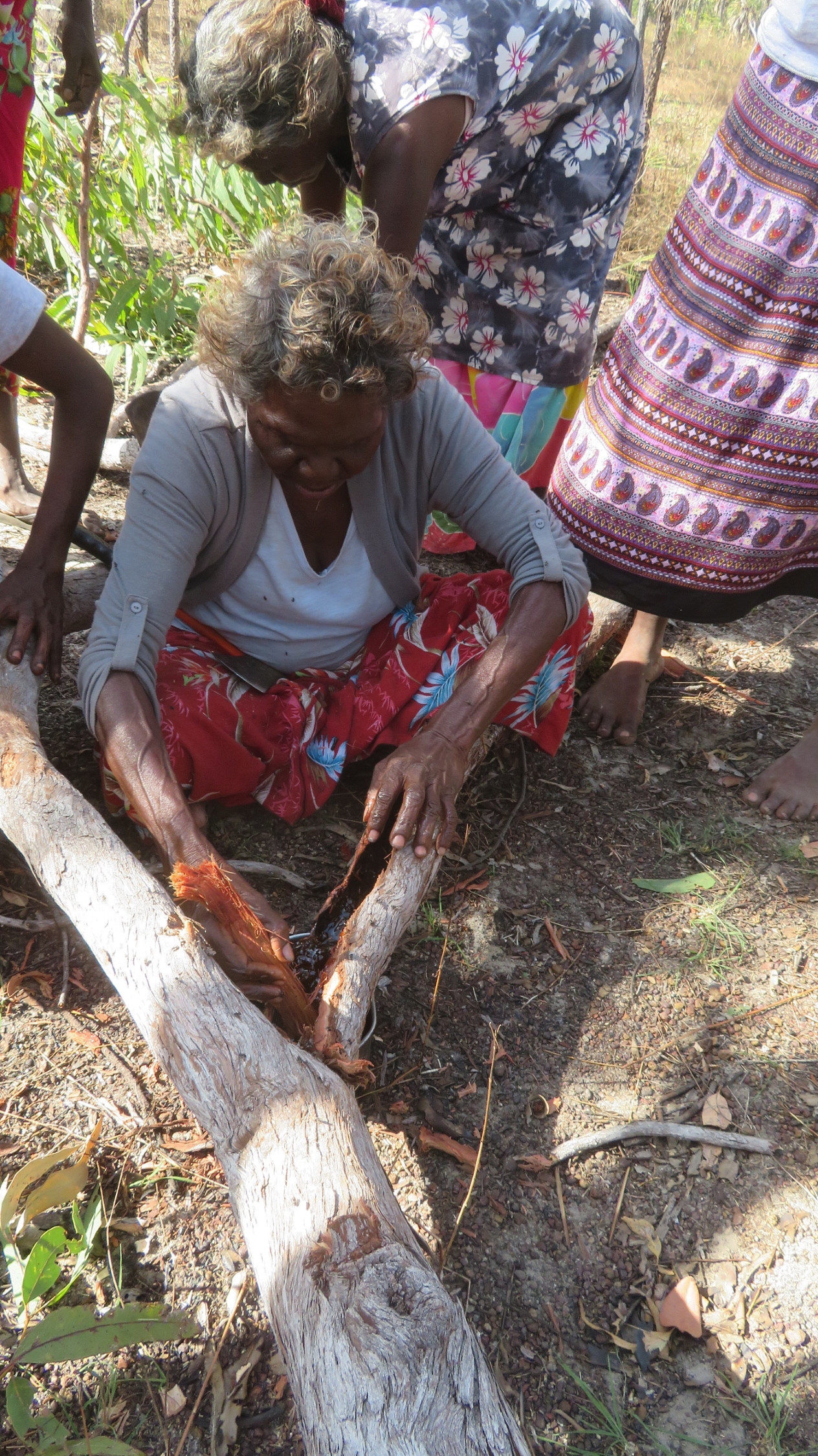
See the honey in the side branch that the woman is guiding into the saucepan with a piece of bark.
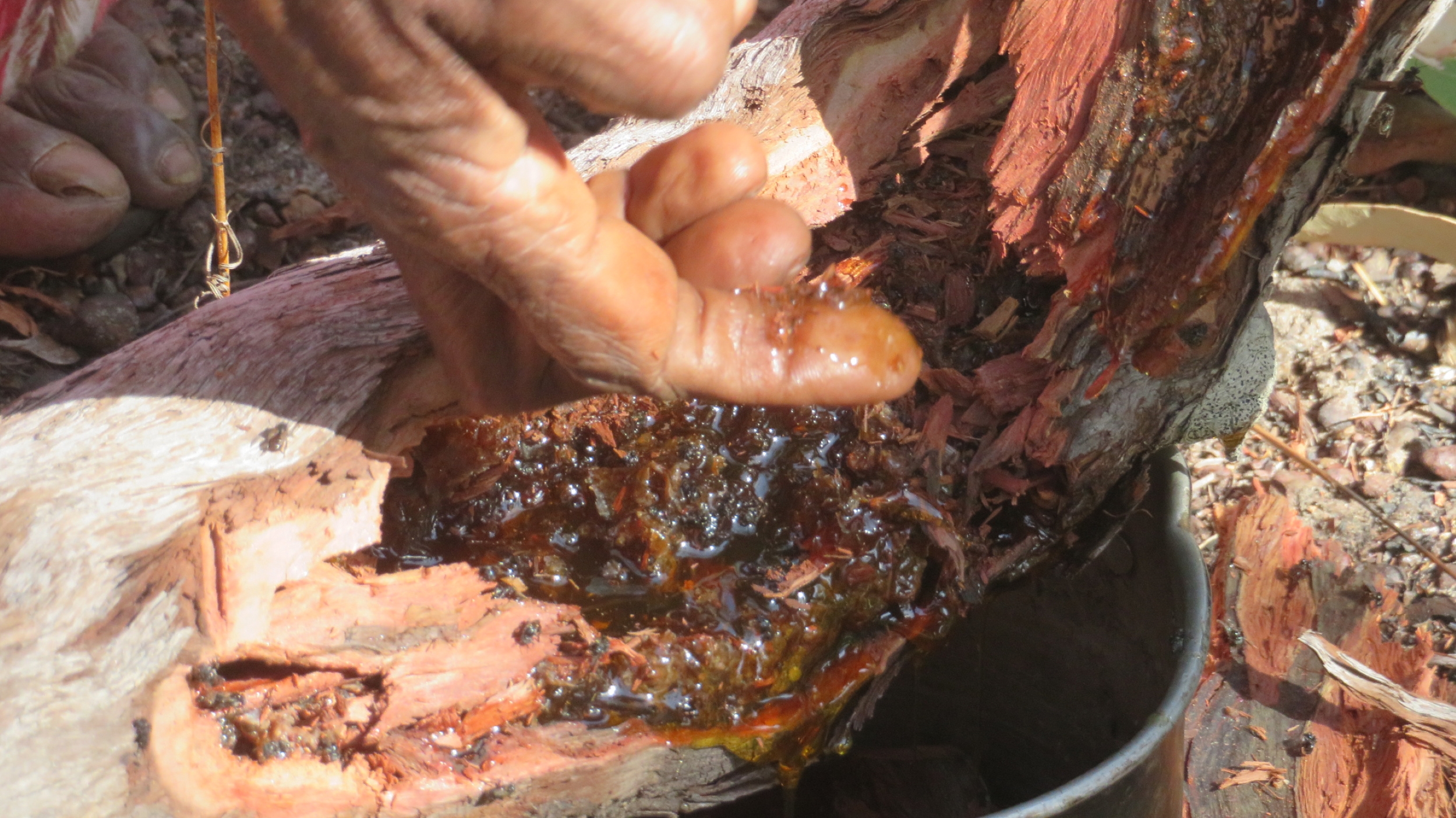
Look at that beautiful, dark, rich honey. The honey is dripping into the saucepan under the log.

More of the wood has been cut away to expose the hive further up. Honey dripping into saucepan.

The saucepan nearly full of honey – and a bit of bark.
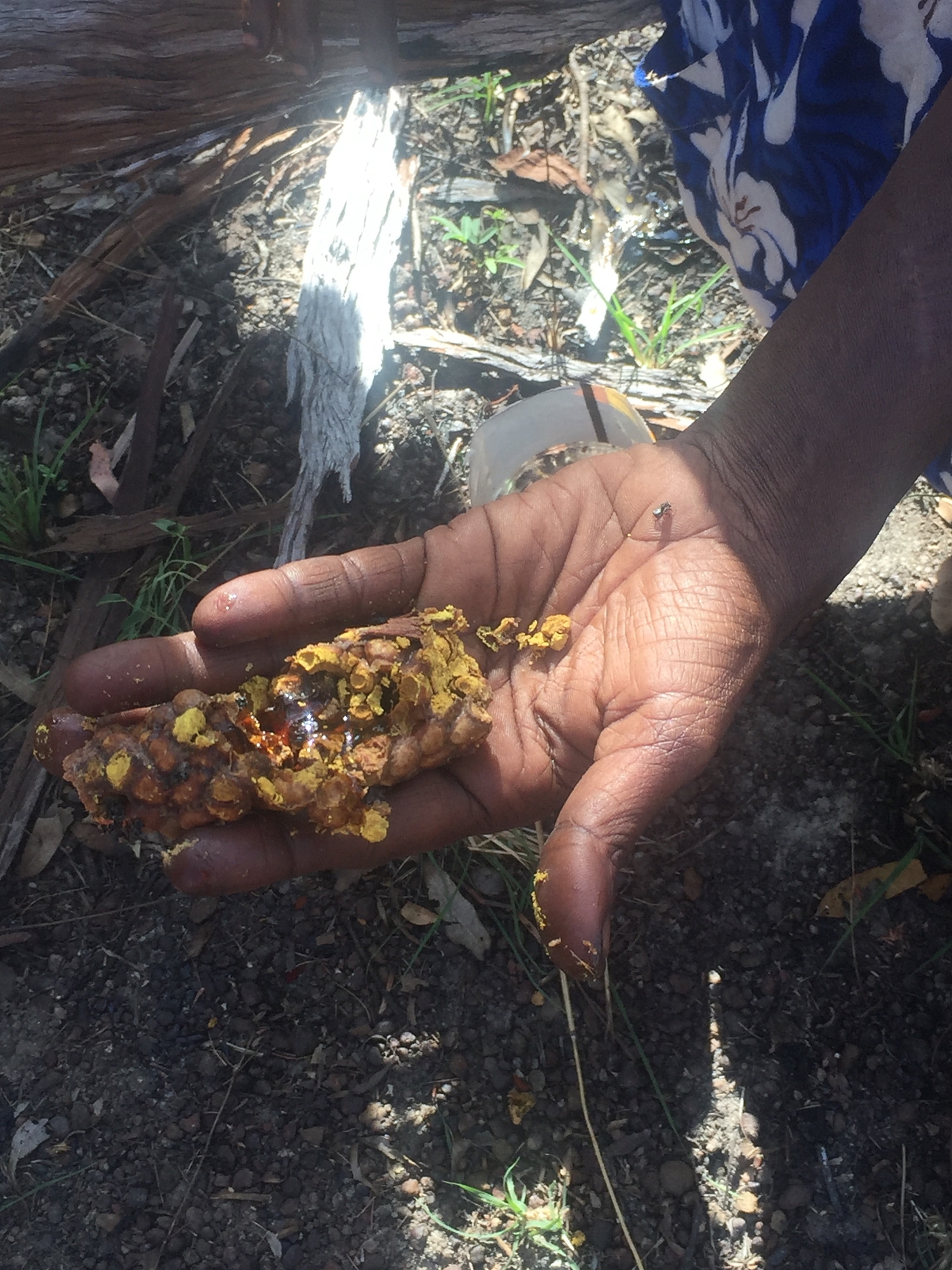
The stored pollen – this too is eaten. I didn’t particularly like the taste.

Honey gathering is a clan activity. Even the children come along to help – and eat the spoils.

Cheeky boy – how come all boys this age are so adorably cheeky!

Slow moving fires are very common in the Top End at this time of the year. No fires should be lit after August 1st, however this is not adhered to, obviously, and is often quite random rather than planned.
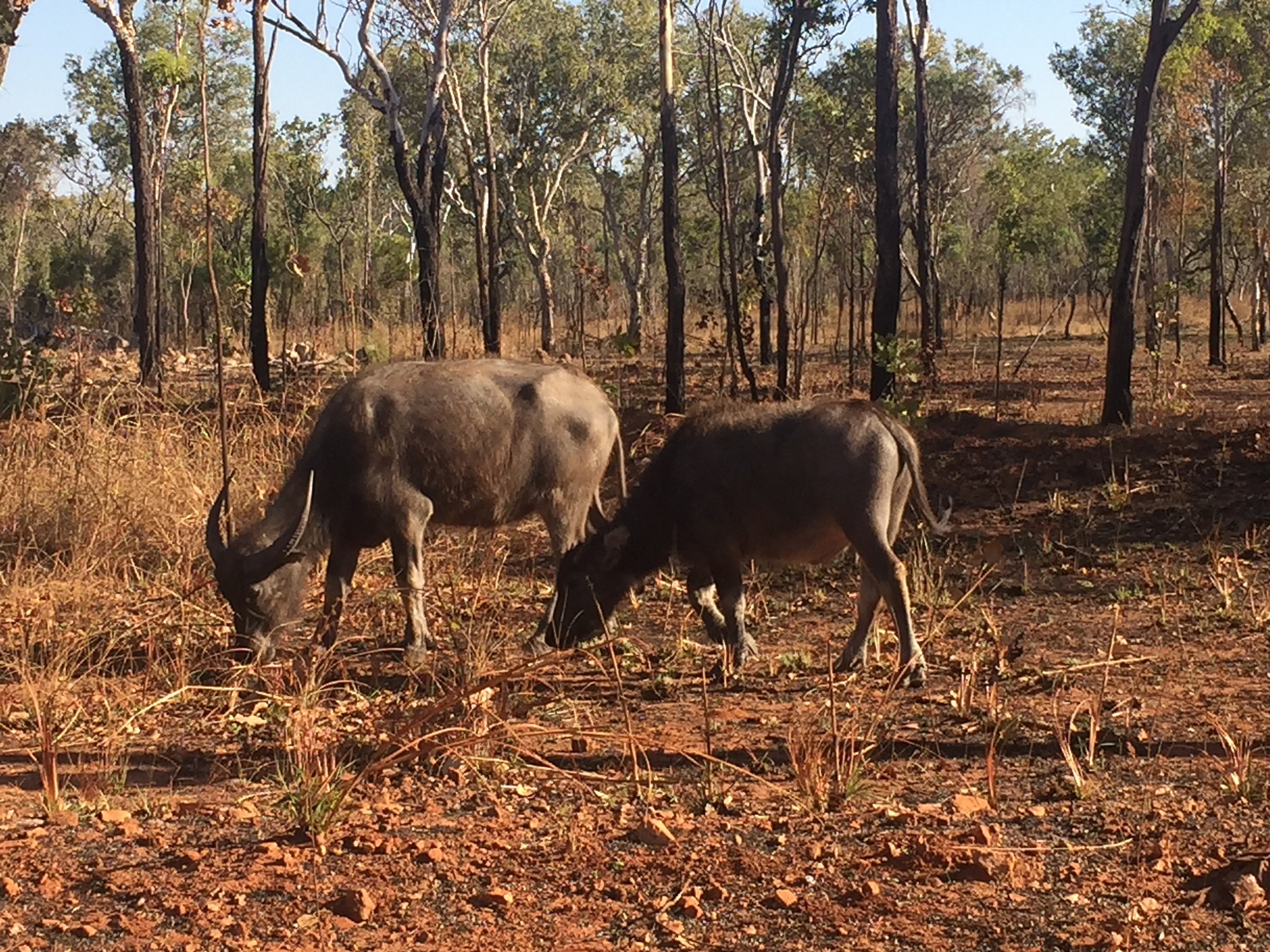
Buffalos grazing by the side of the road. These can be very dangerous if they take it into their heads to cross the road as you get there.

Beautiful animals, but they are feral in this countryside and cause a lot of damage to these fragile grasses and soils.

A herd of feral donkeys.
 Feral donkeys wander in herds.
Feral donkeys wander in herds.

Buffalo family – Mum, Dad and two calves of different ages by the look of them. And granddad in the background!

Yes, more buffalo. Lots to photograph along the roads.
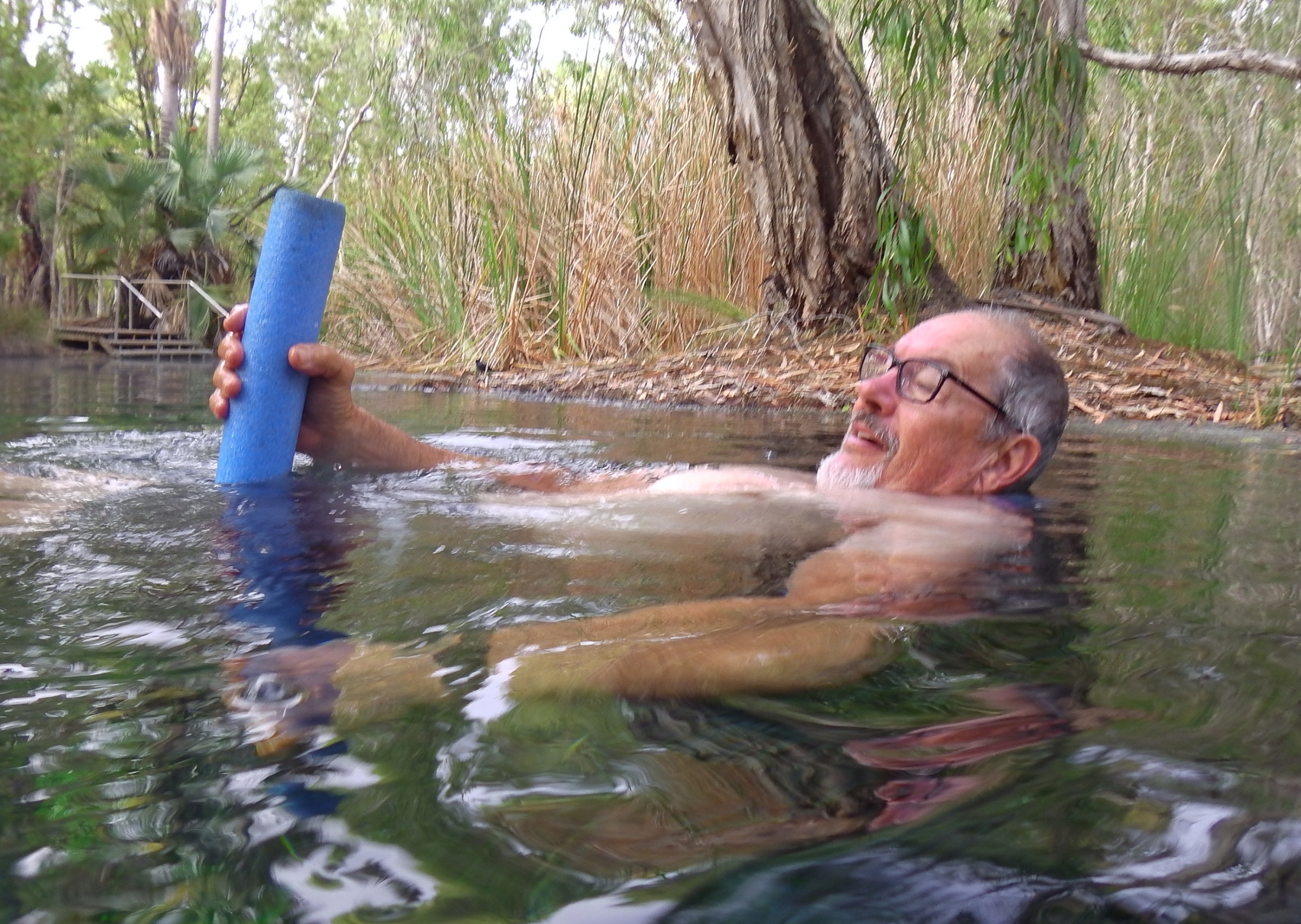
Swimming in the beautiful clear waters of Bitter Springs. Riding the noodle cross-wise may not look so good, but was the most comfortable.
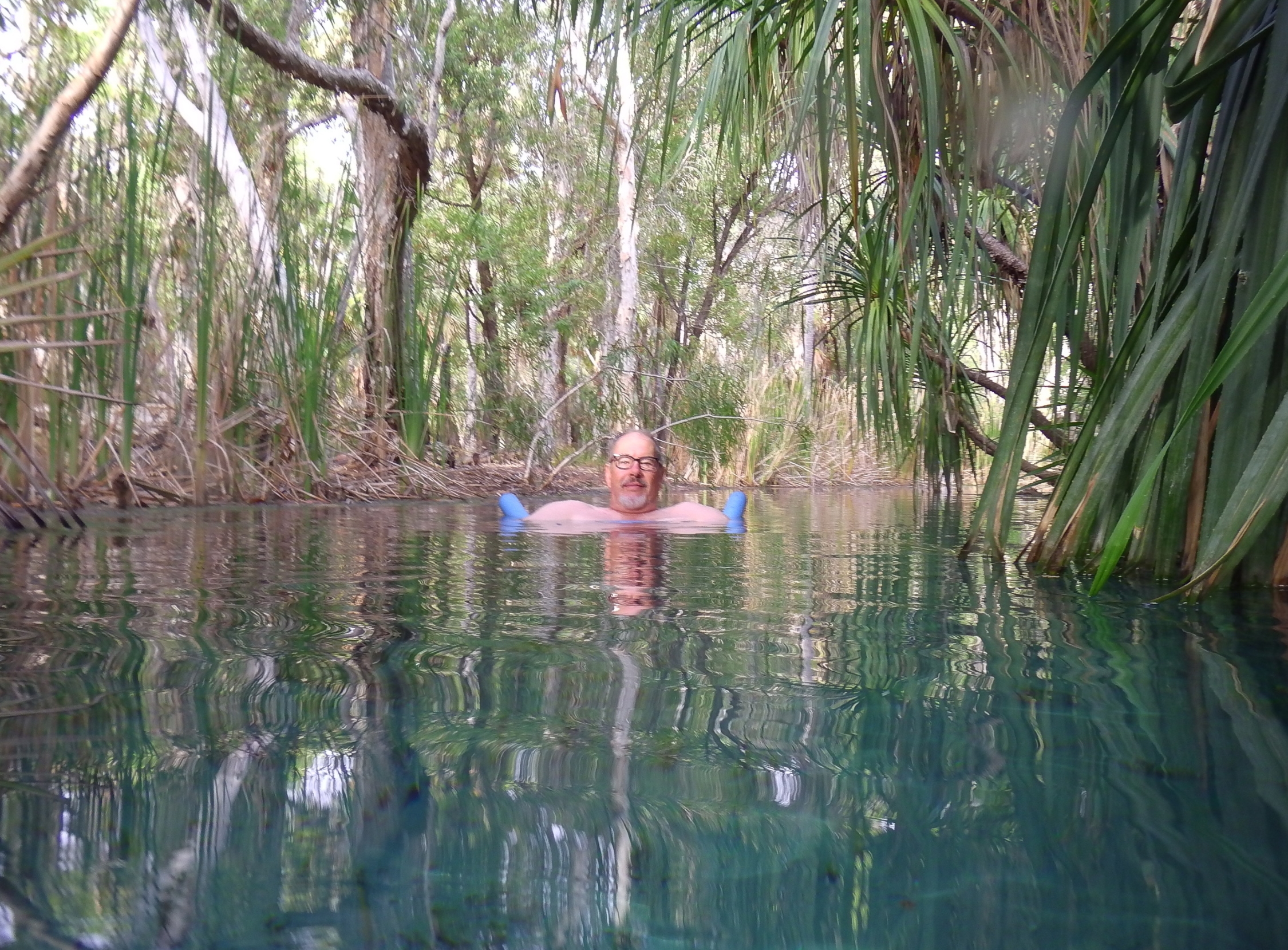
The very beautiful, artesian-fed watercourse lined with cabbage palms. Unforgettable.
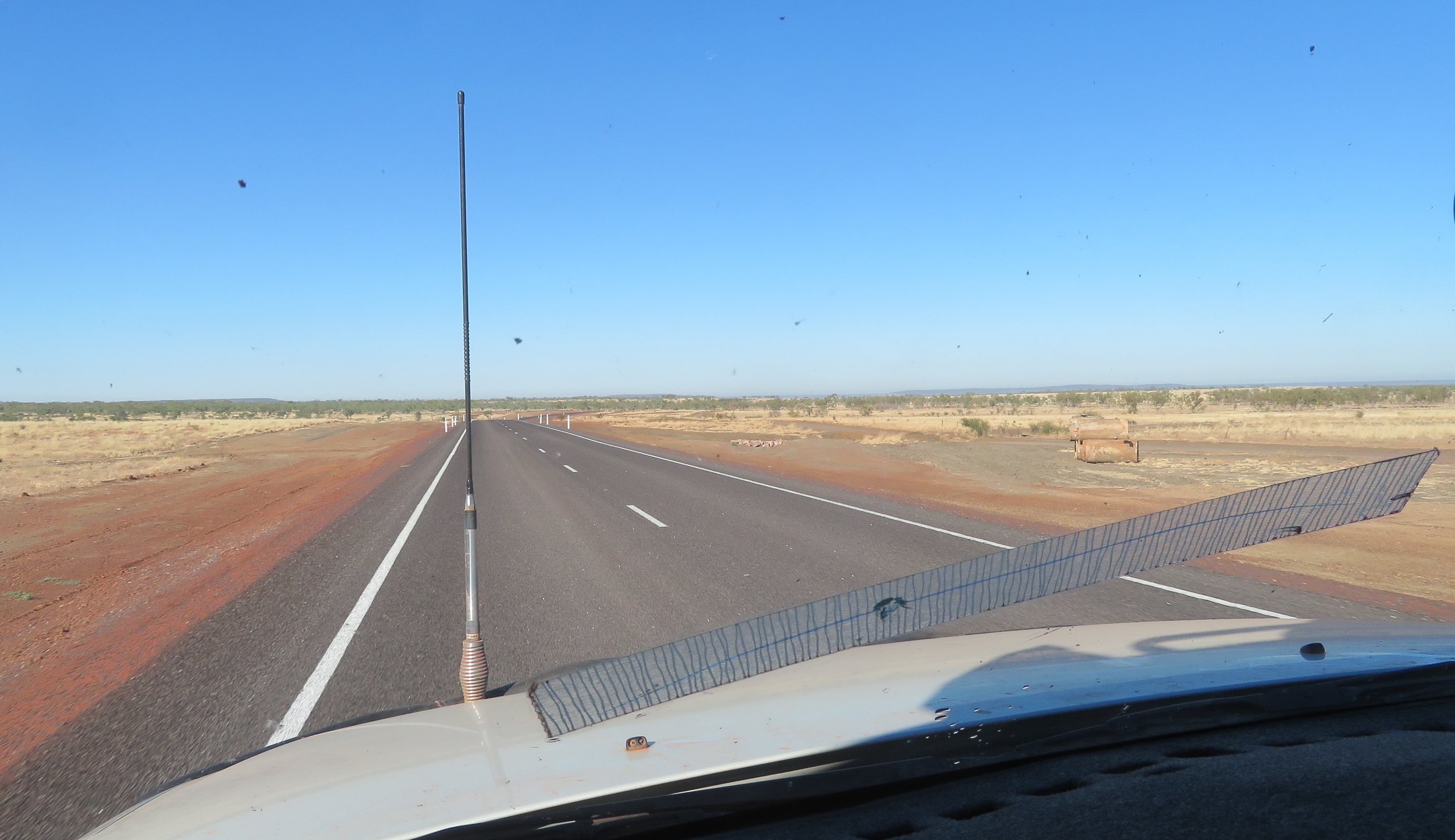
The very depressing countryside near Cape Crawford.
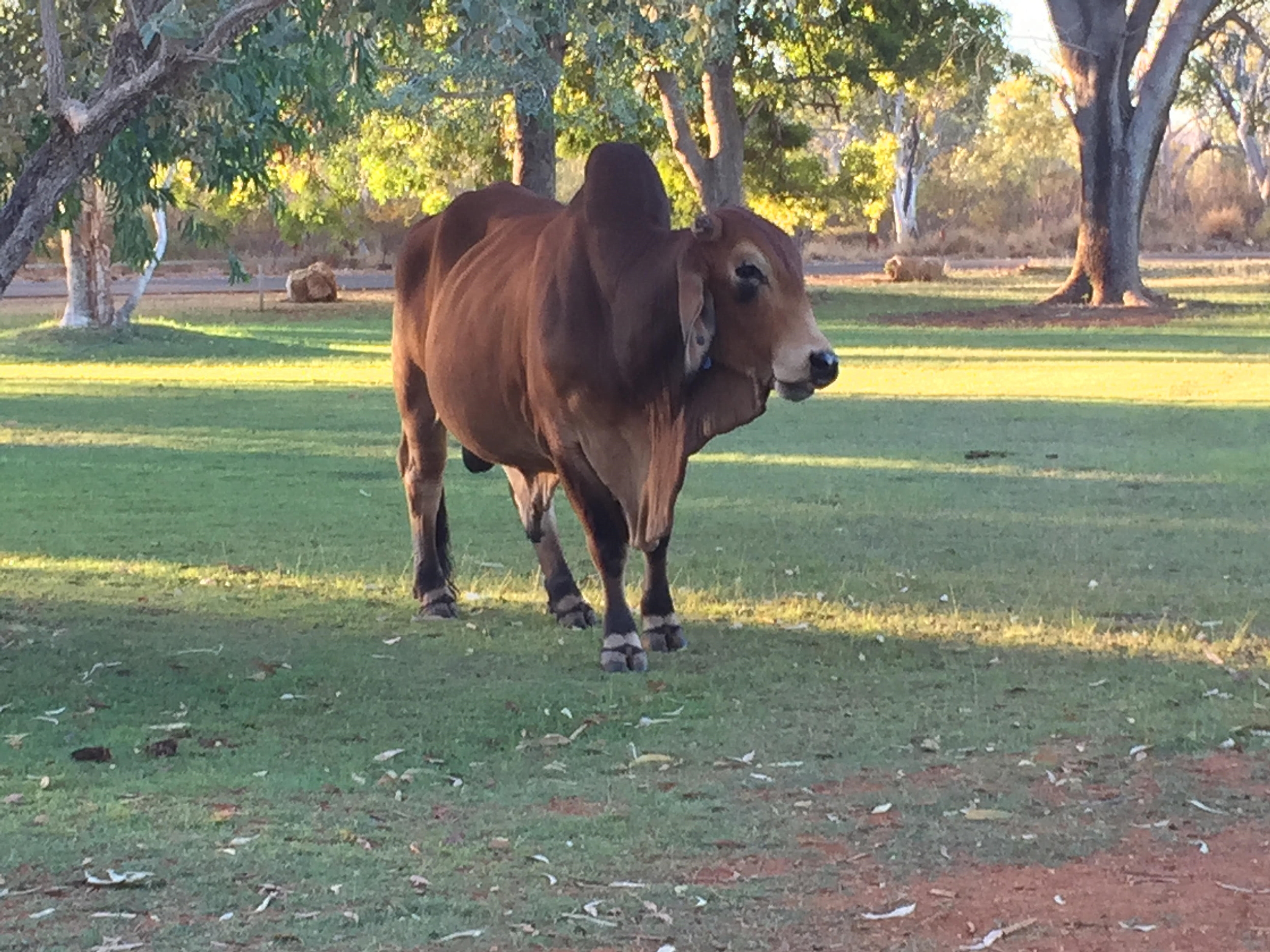
One of the two Brahmans that wander the hotel and camping grounds. What was most entertaining is when they drank from directly from the large sprinklers that keep this grass so lovely and green.
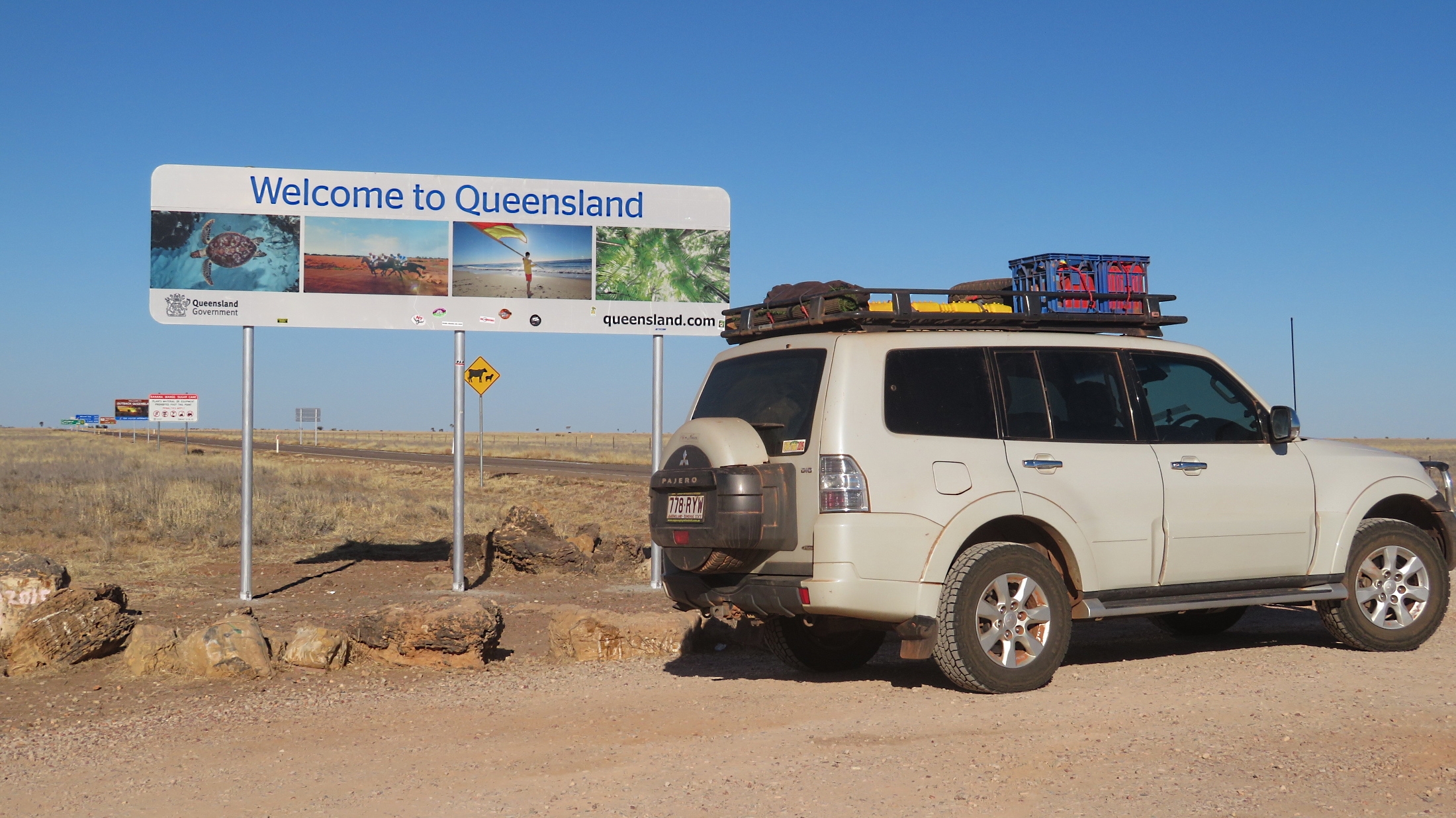
Welcome back to our home State. There’s no place life home.

A big horse event happened here today. Now there’s just the music, the bar and the BIG hats to go. Camooweal
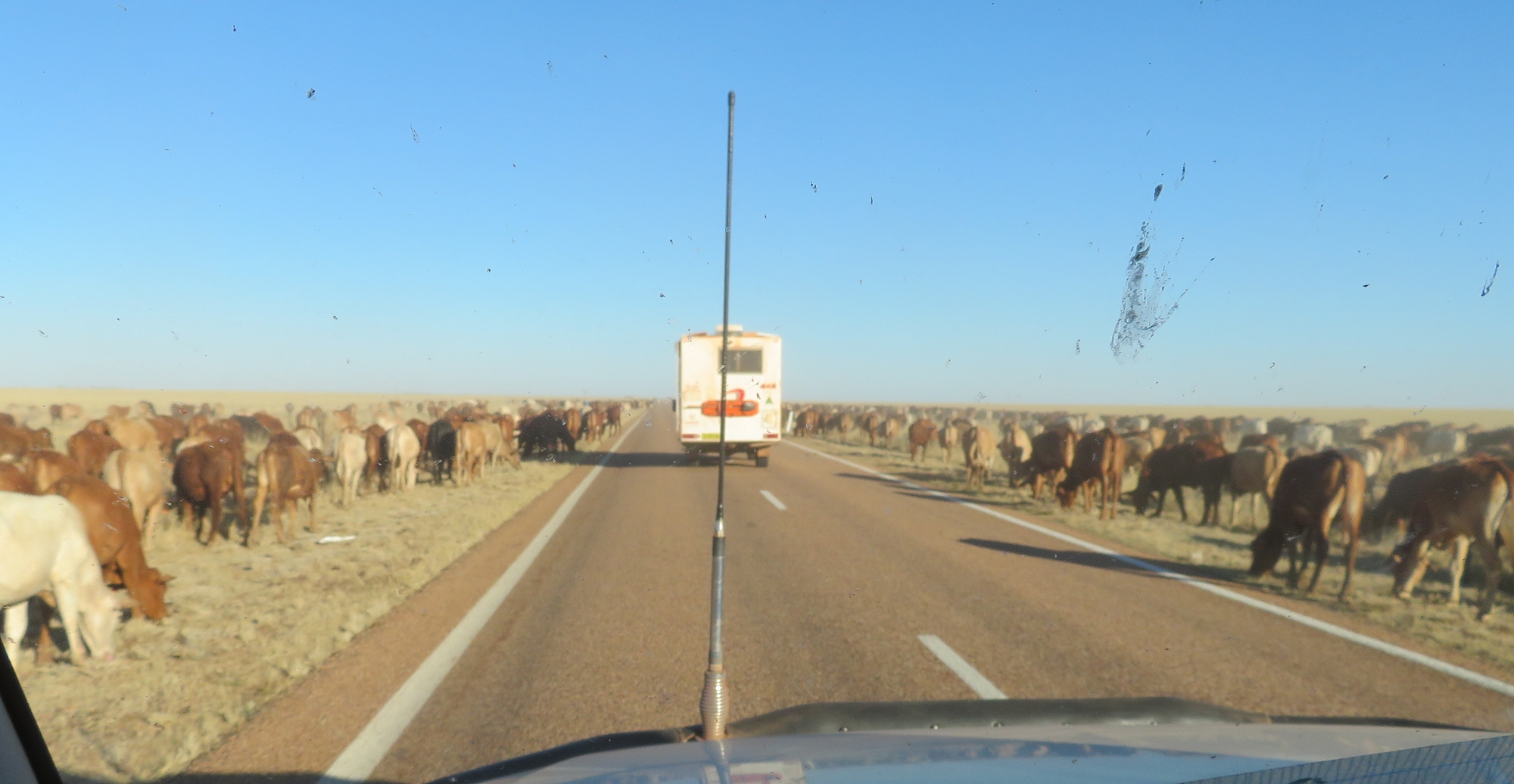
Grazing the long paddock. As you can see there’s not too much here for the poor damn animals to eat either. So dry. Landsborough Highway

Farewell dinner in Winton with Pat and Dick. You’ve been great travelling companions and I hope we’ll have more travels together in the future.
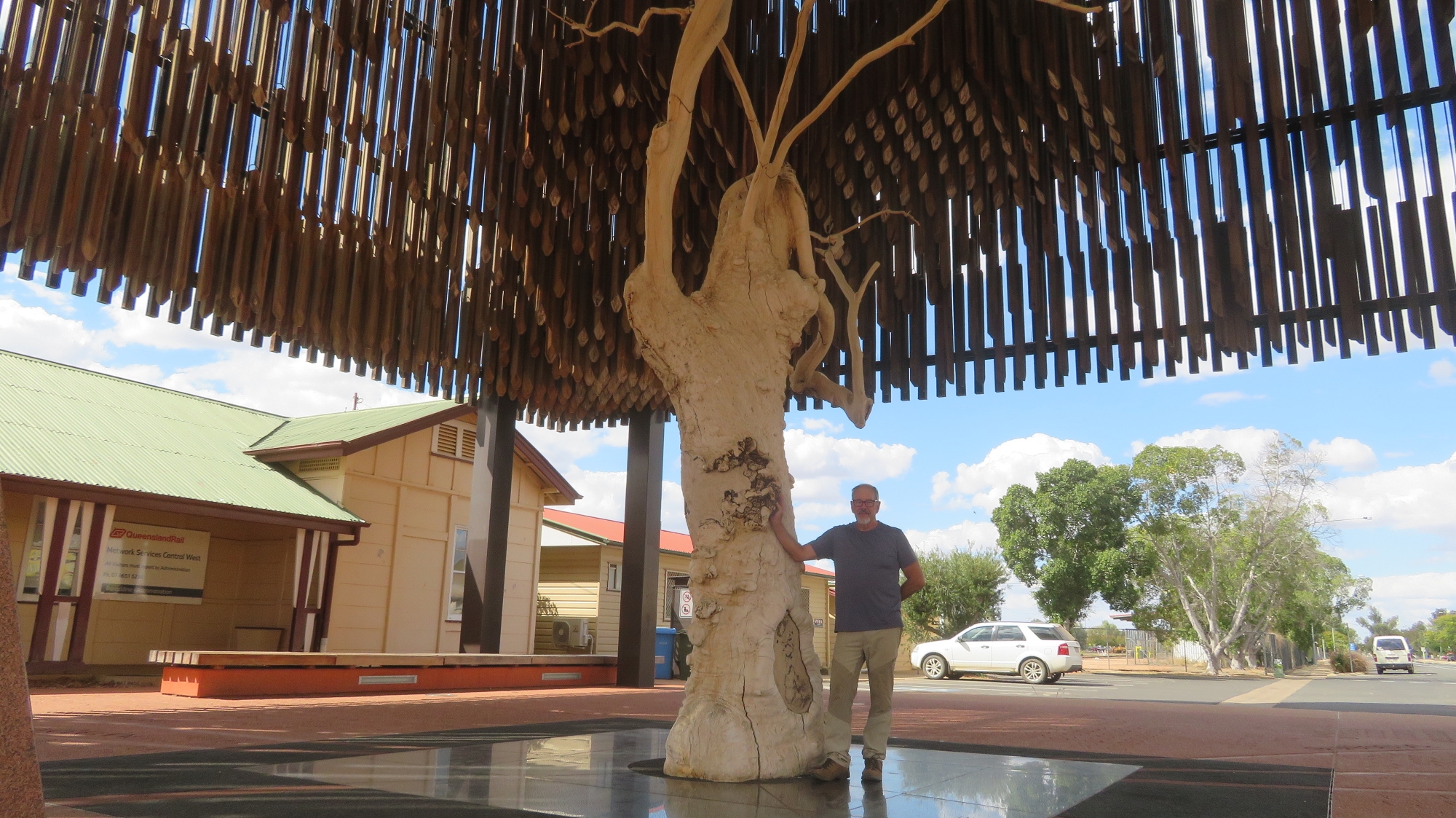
Winton and the Tree of Knowledge.